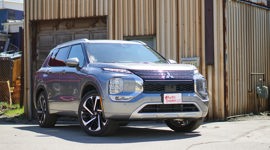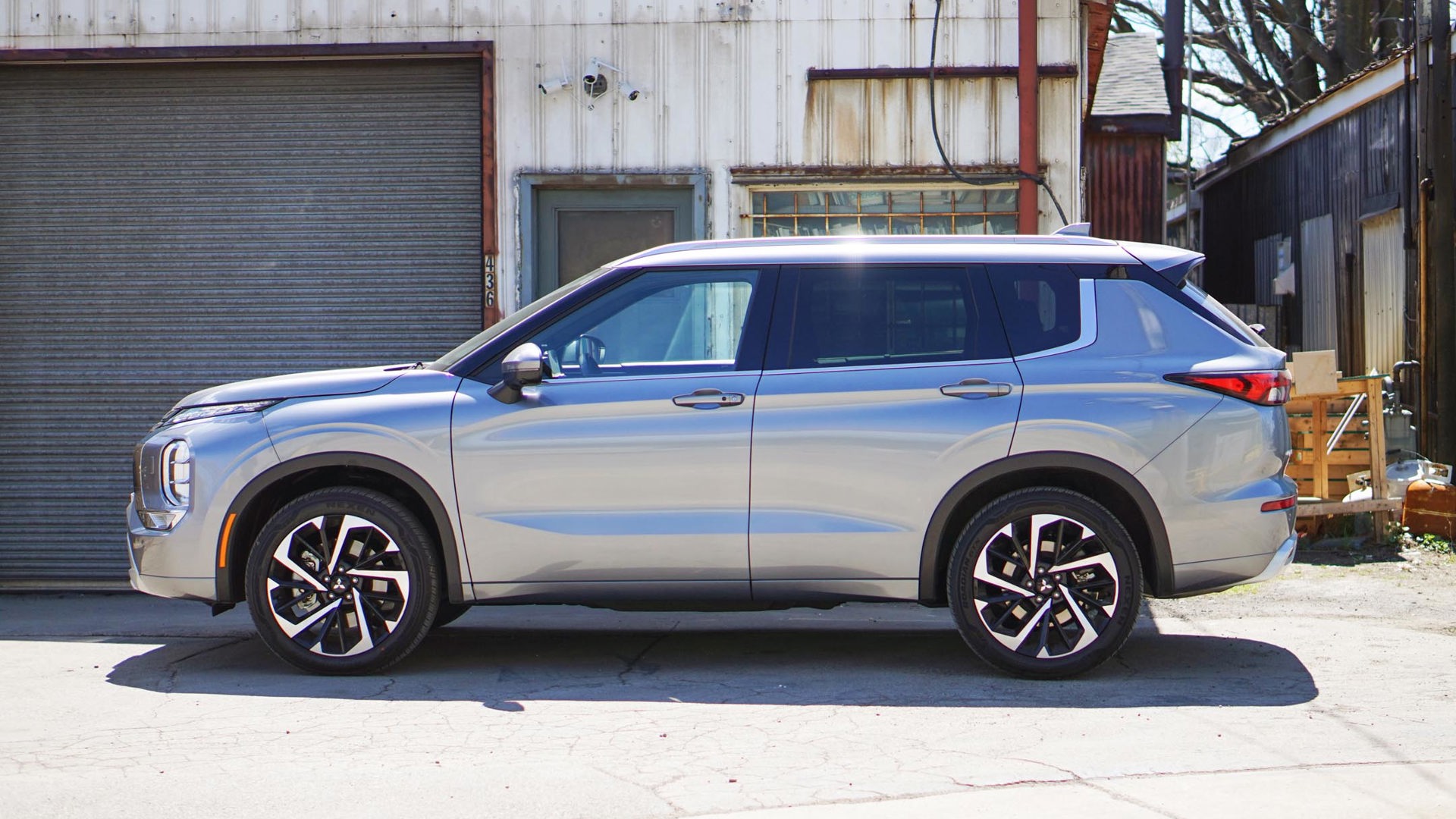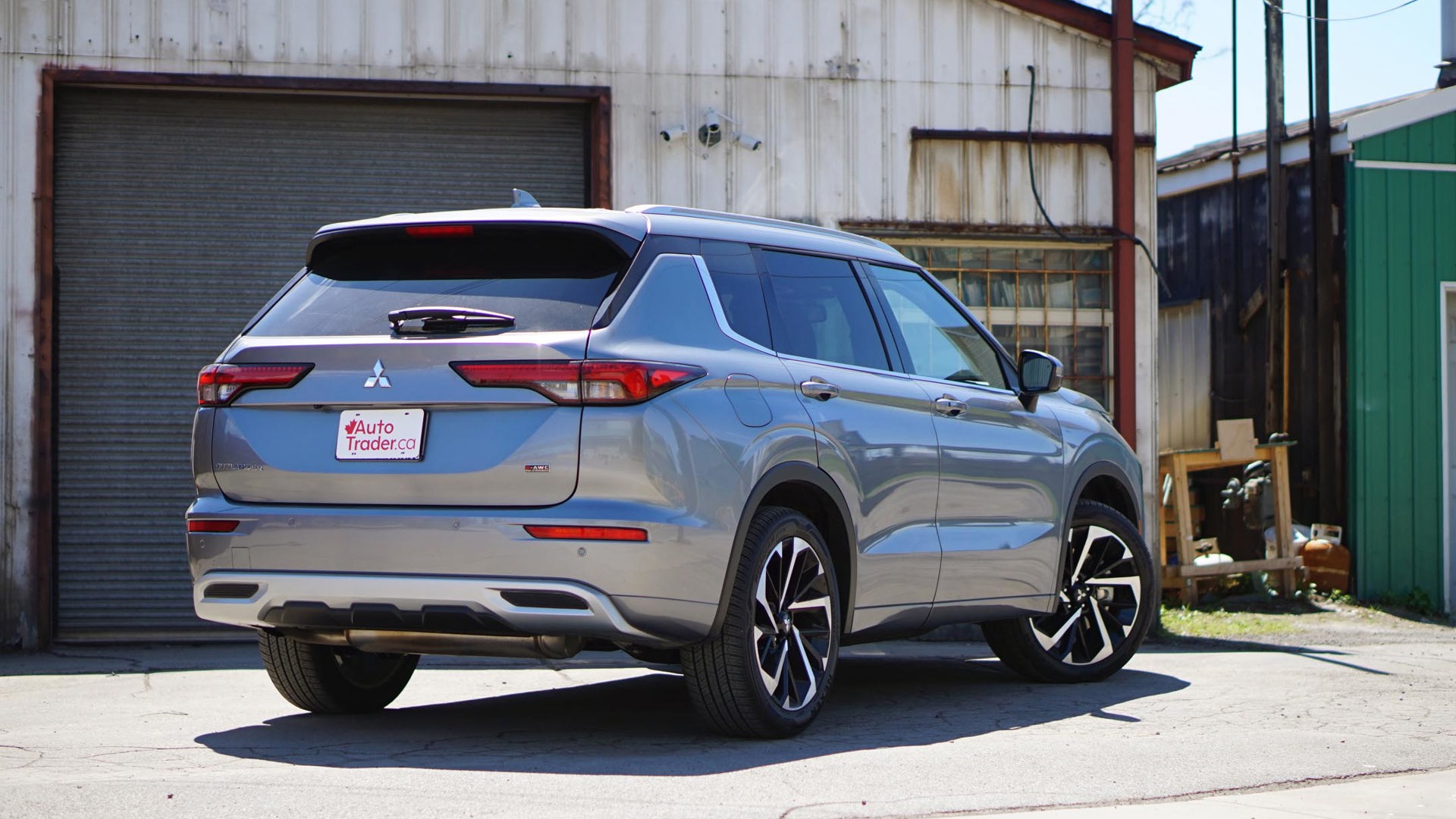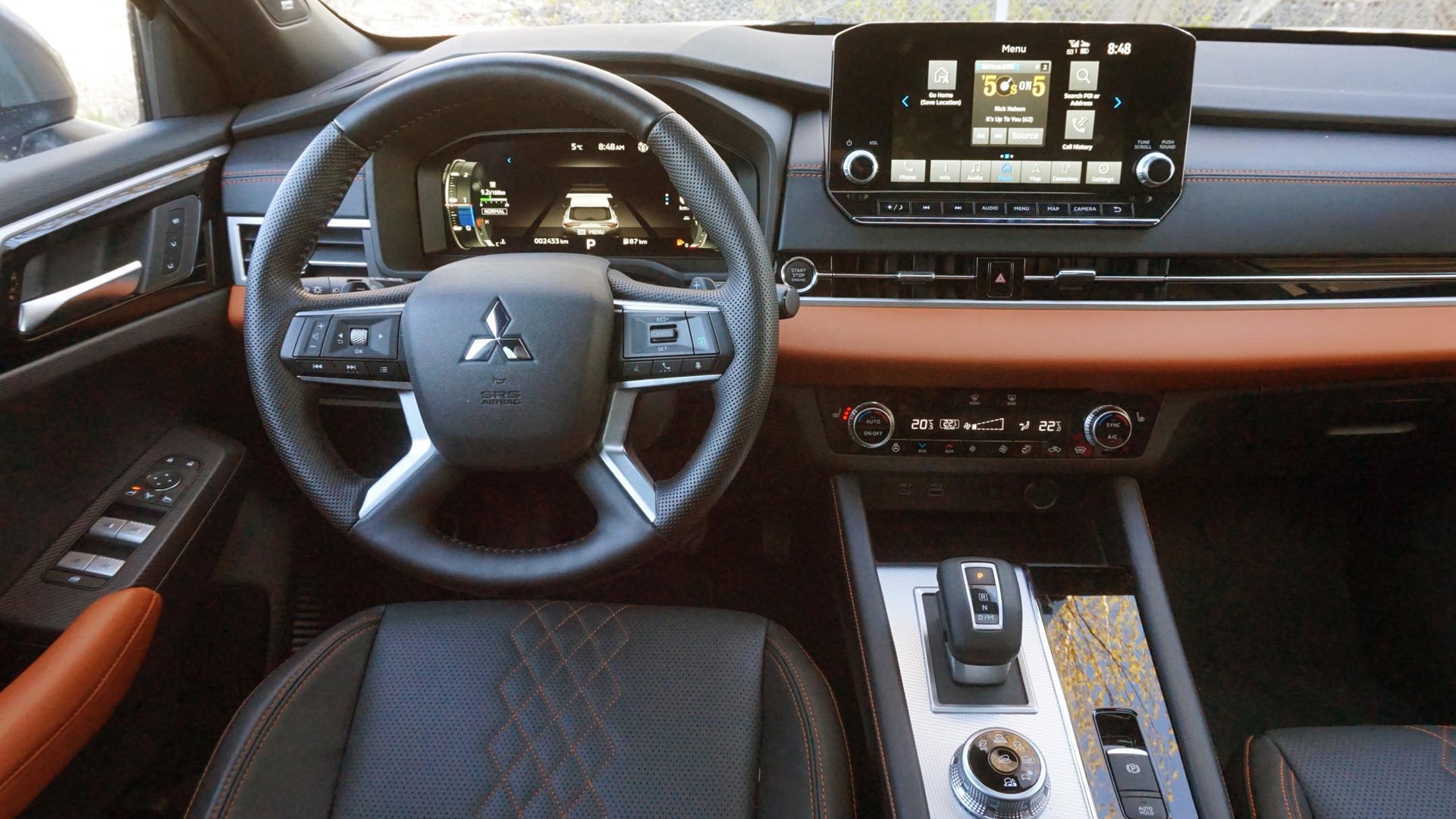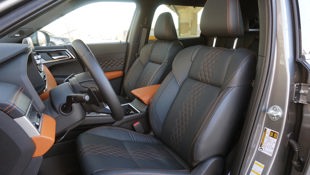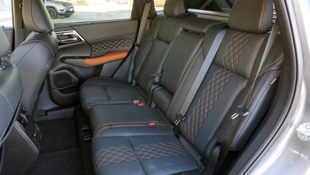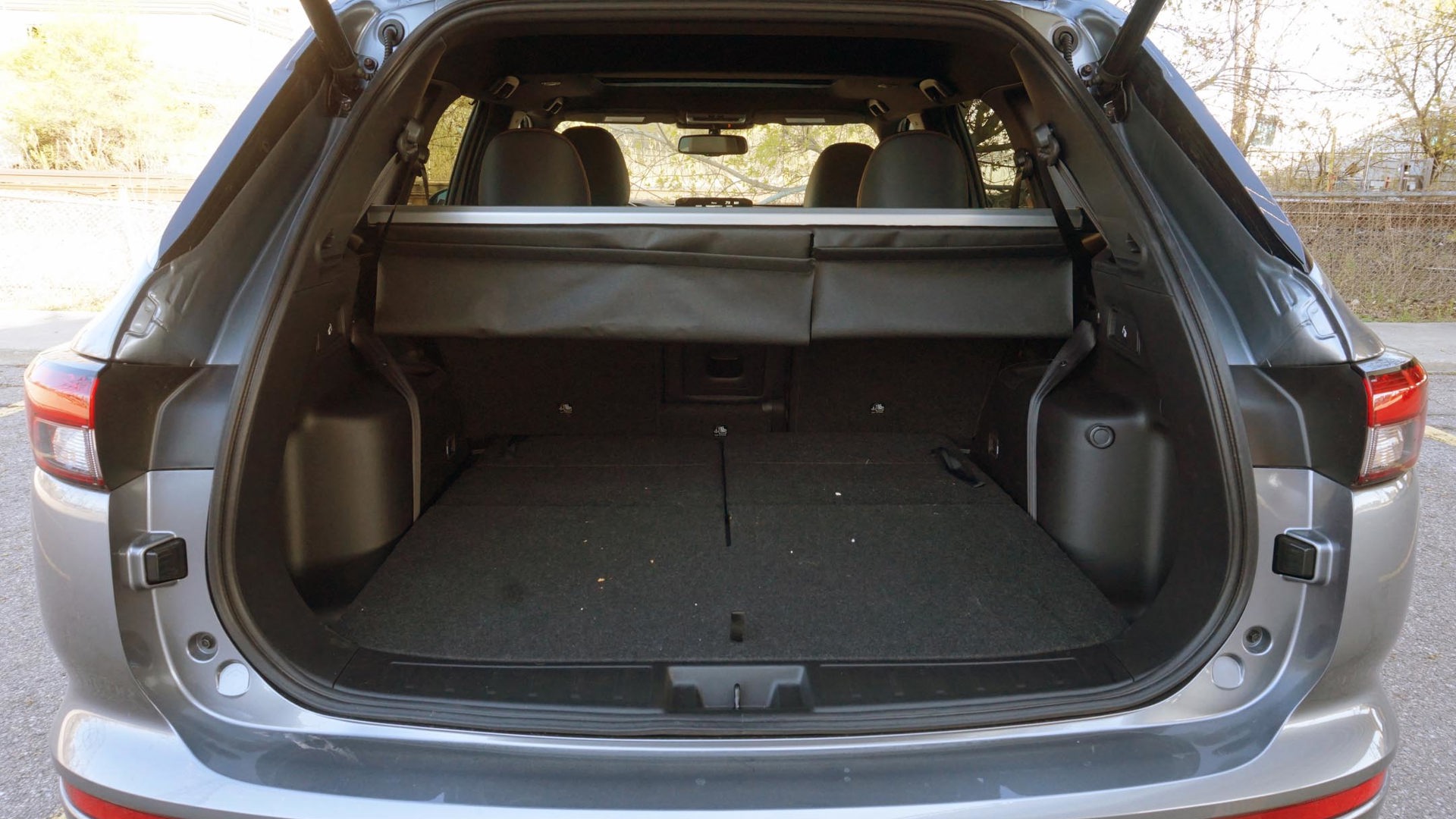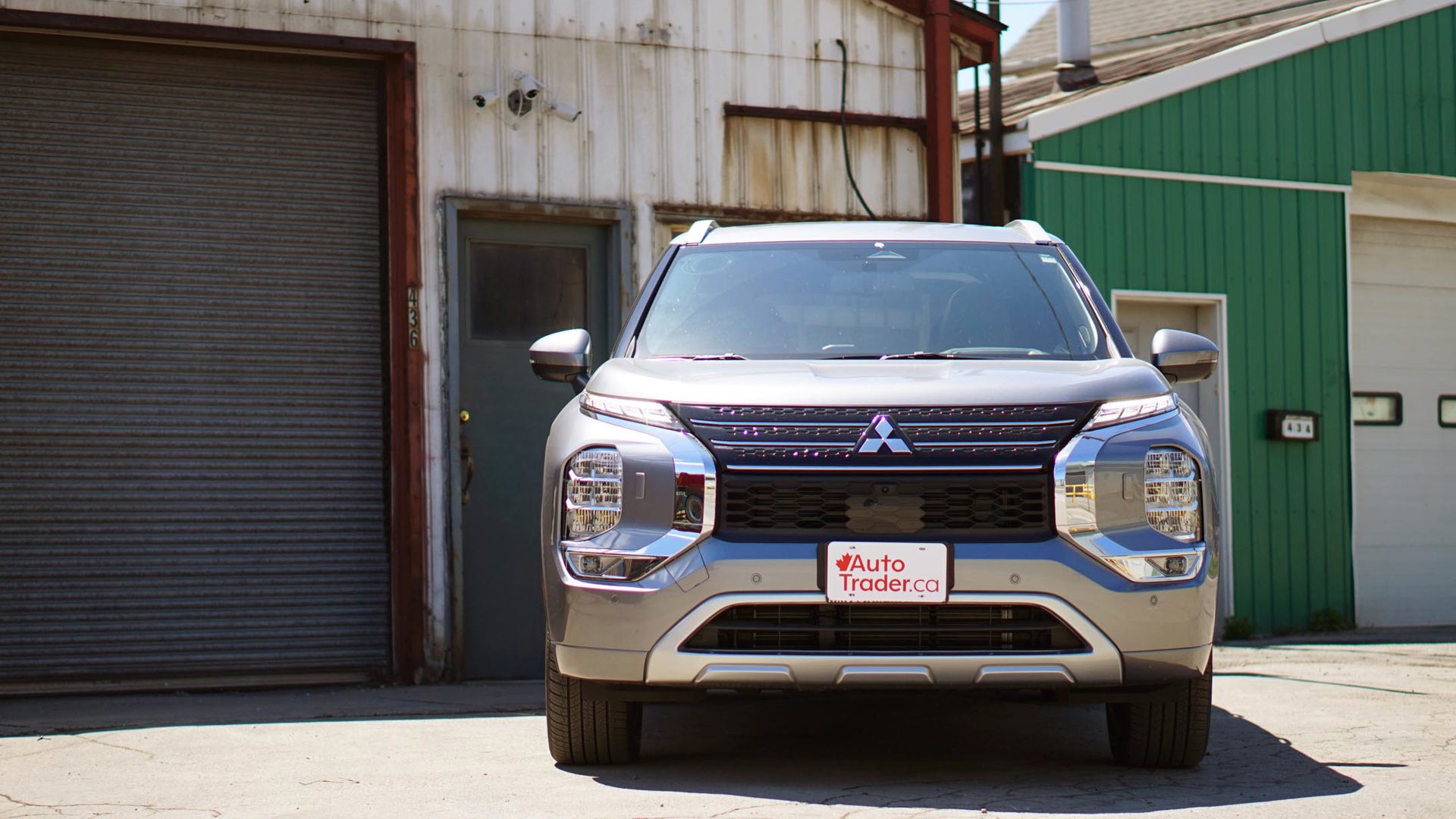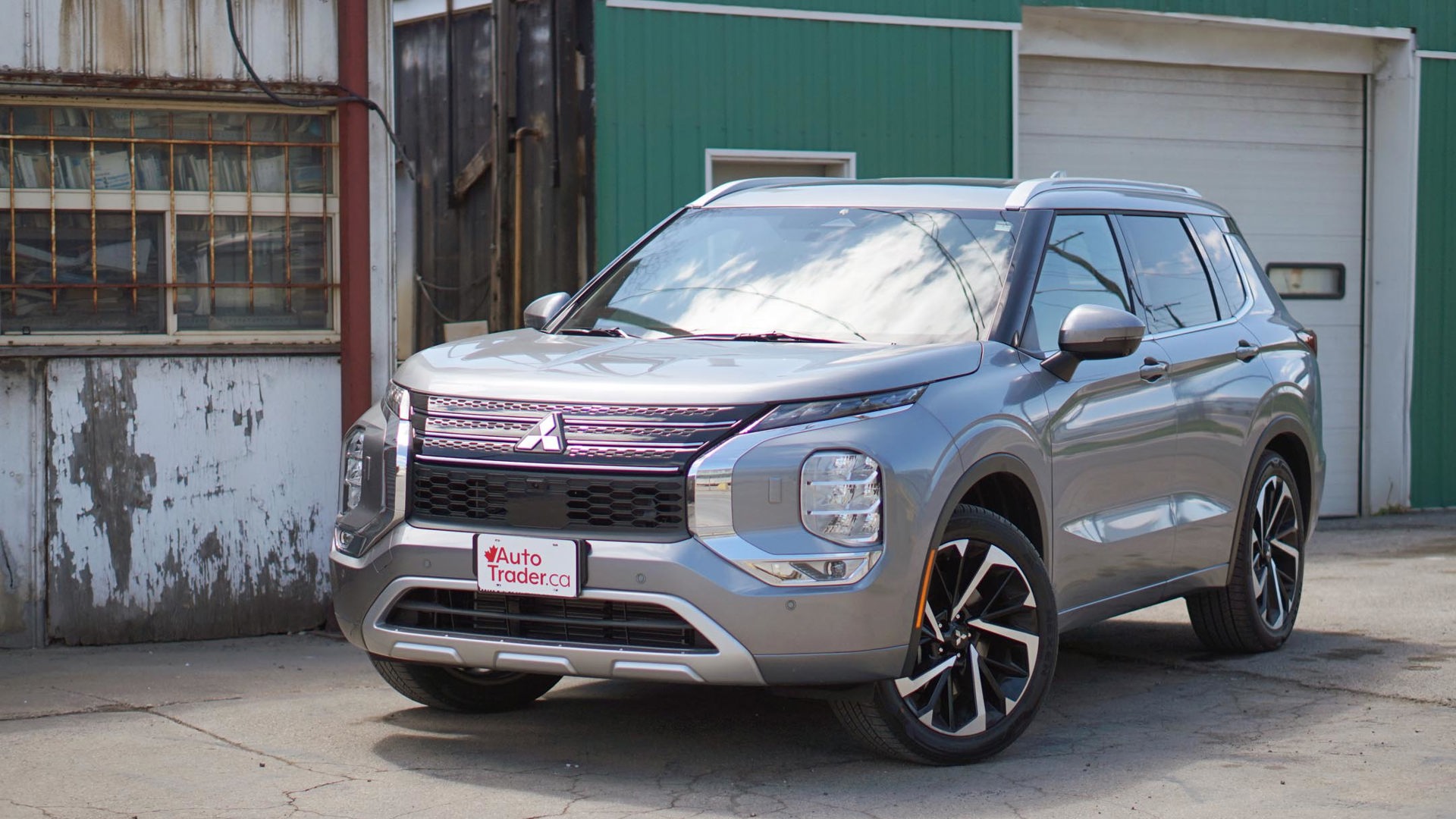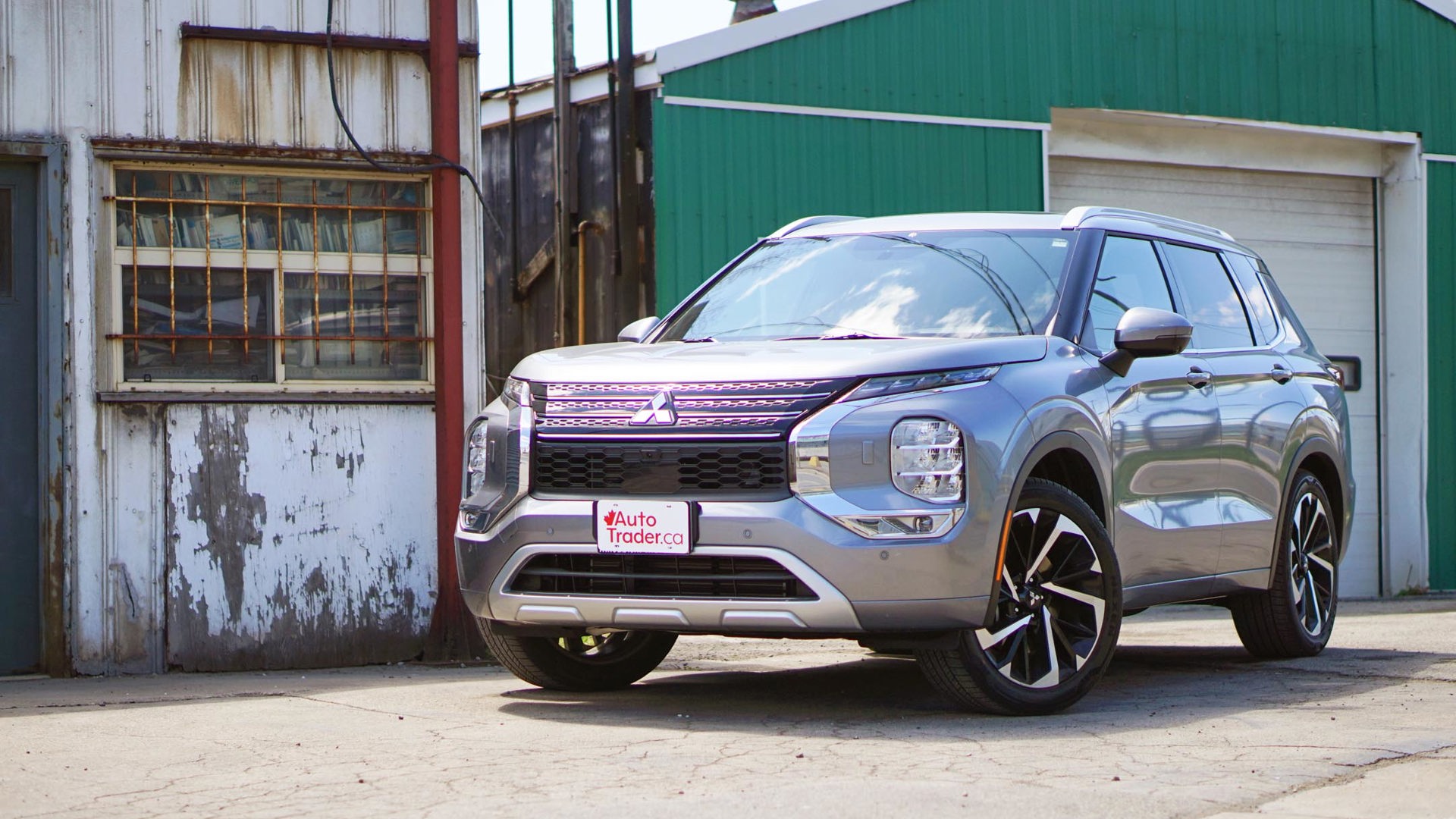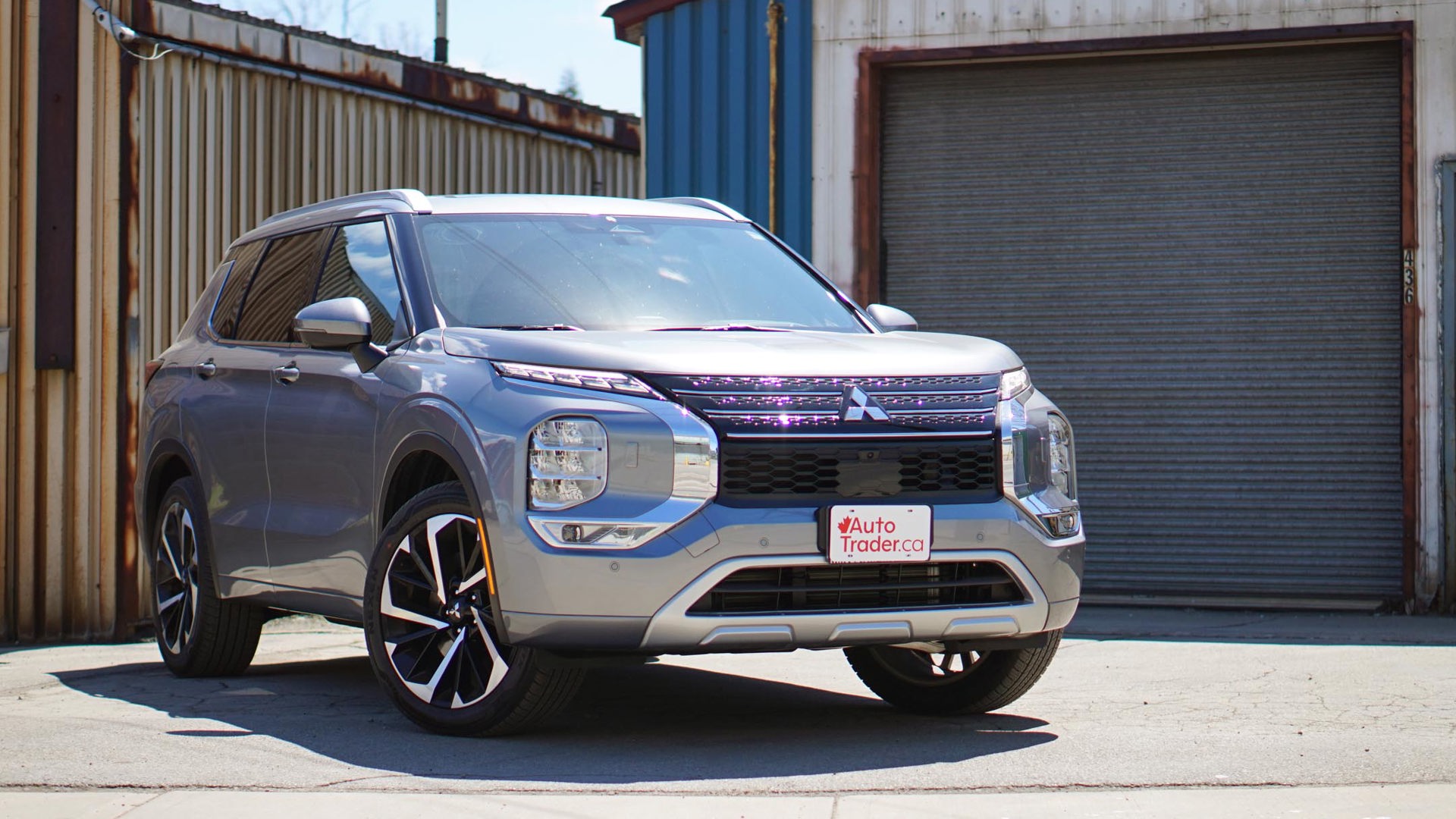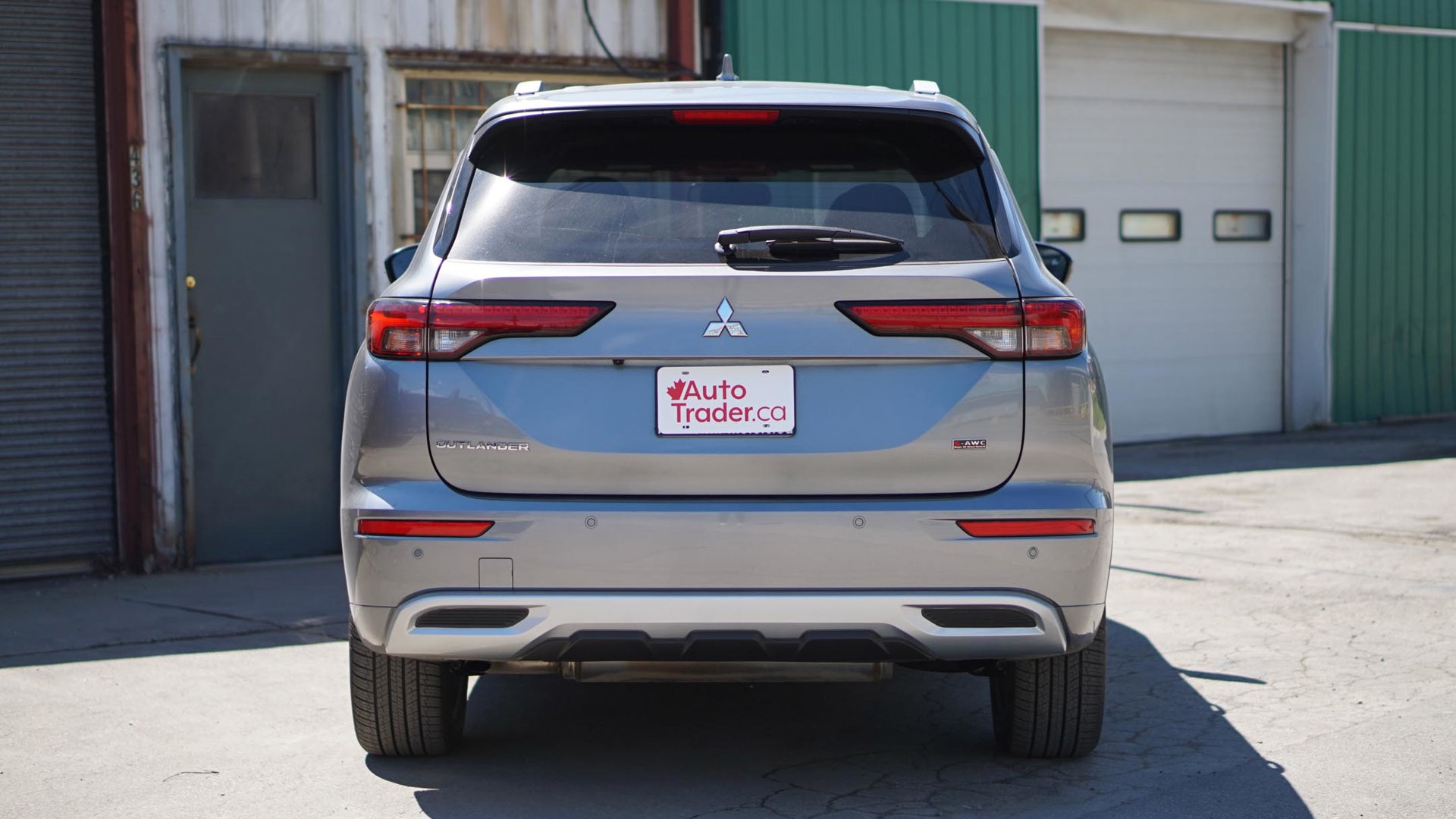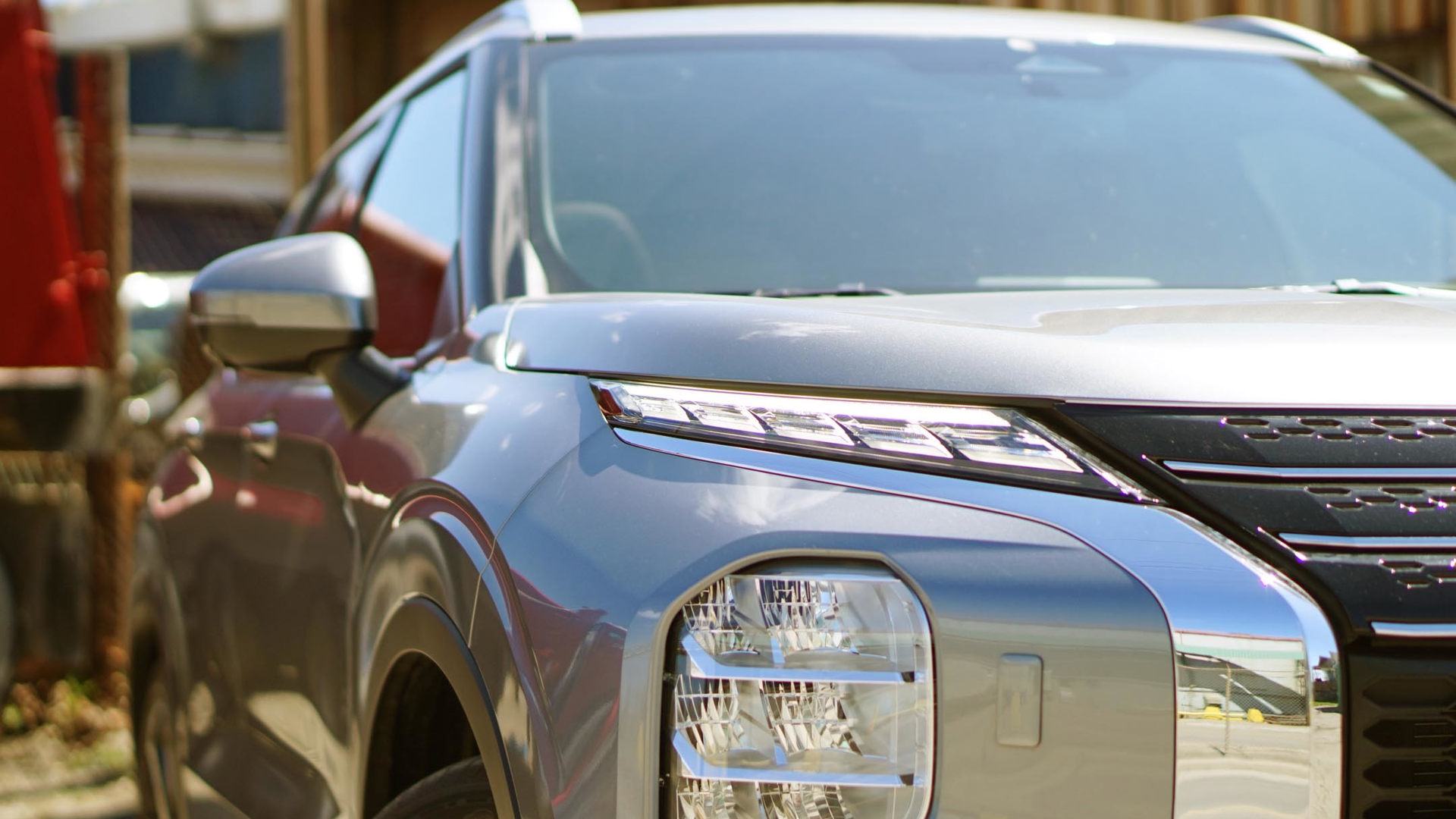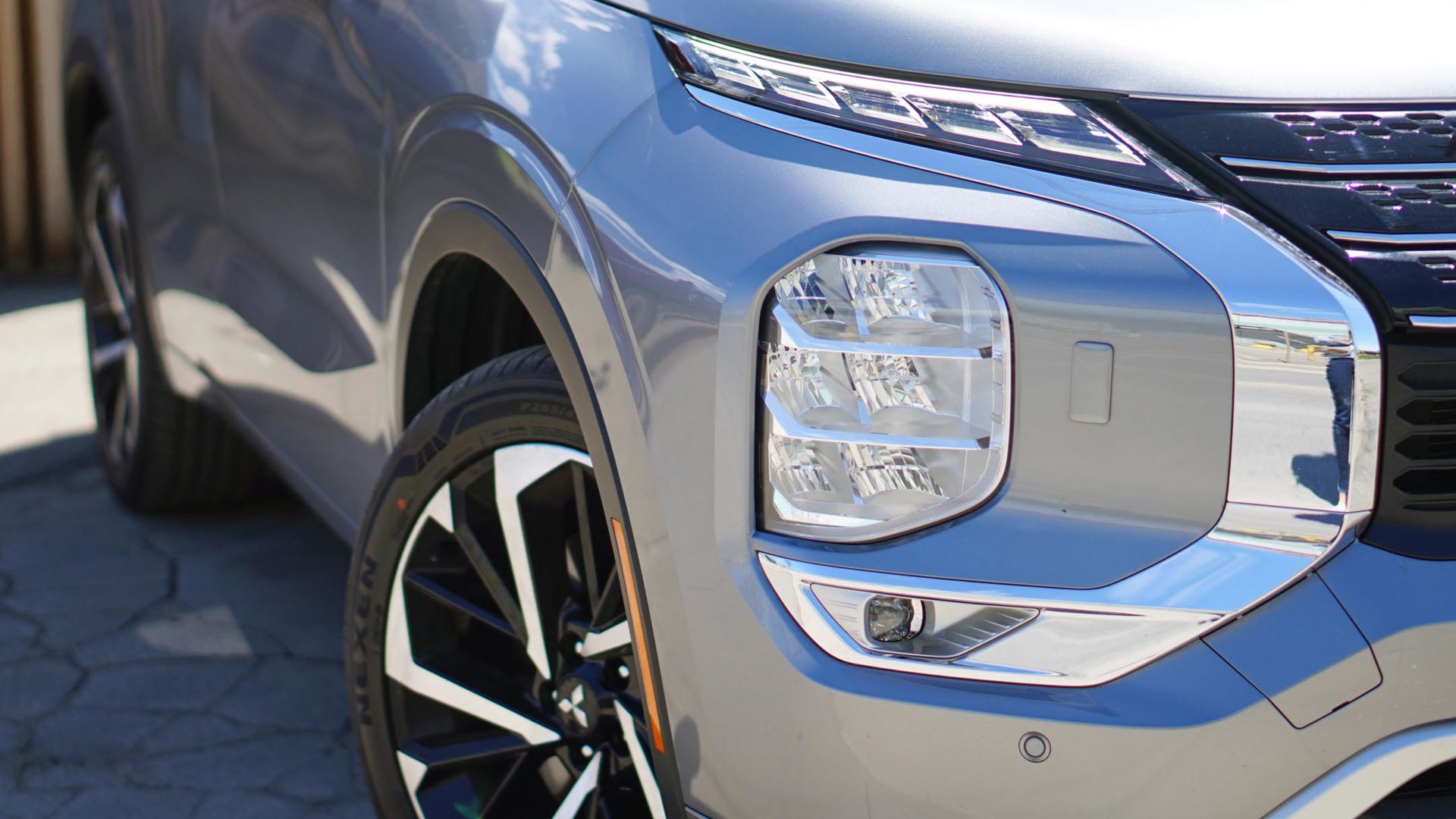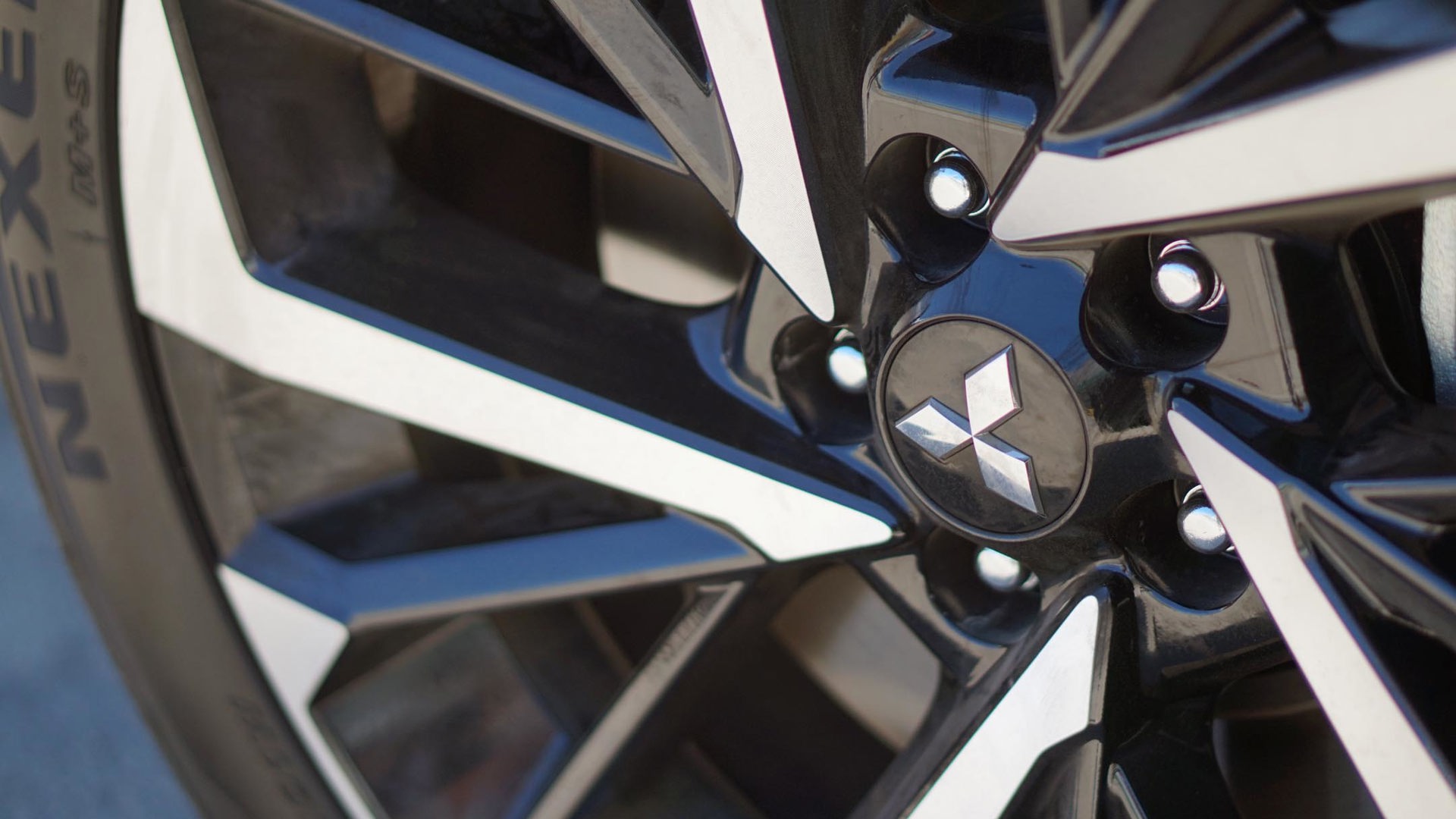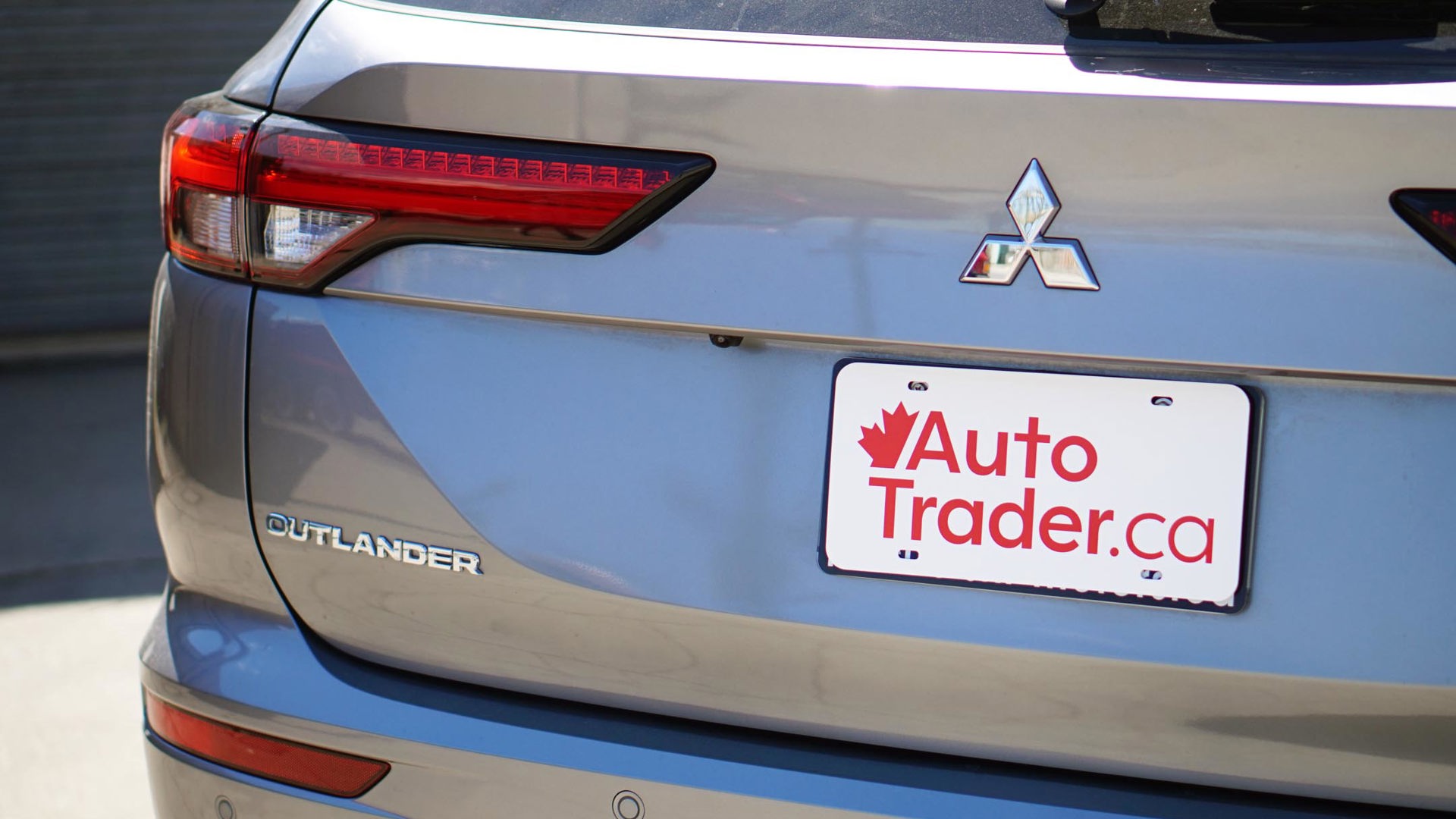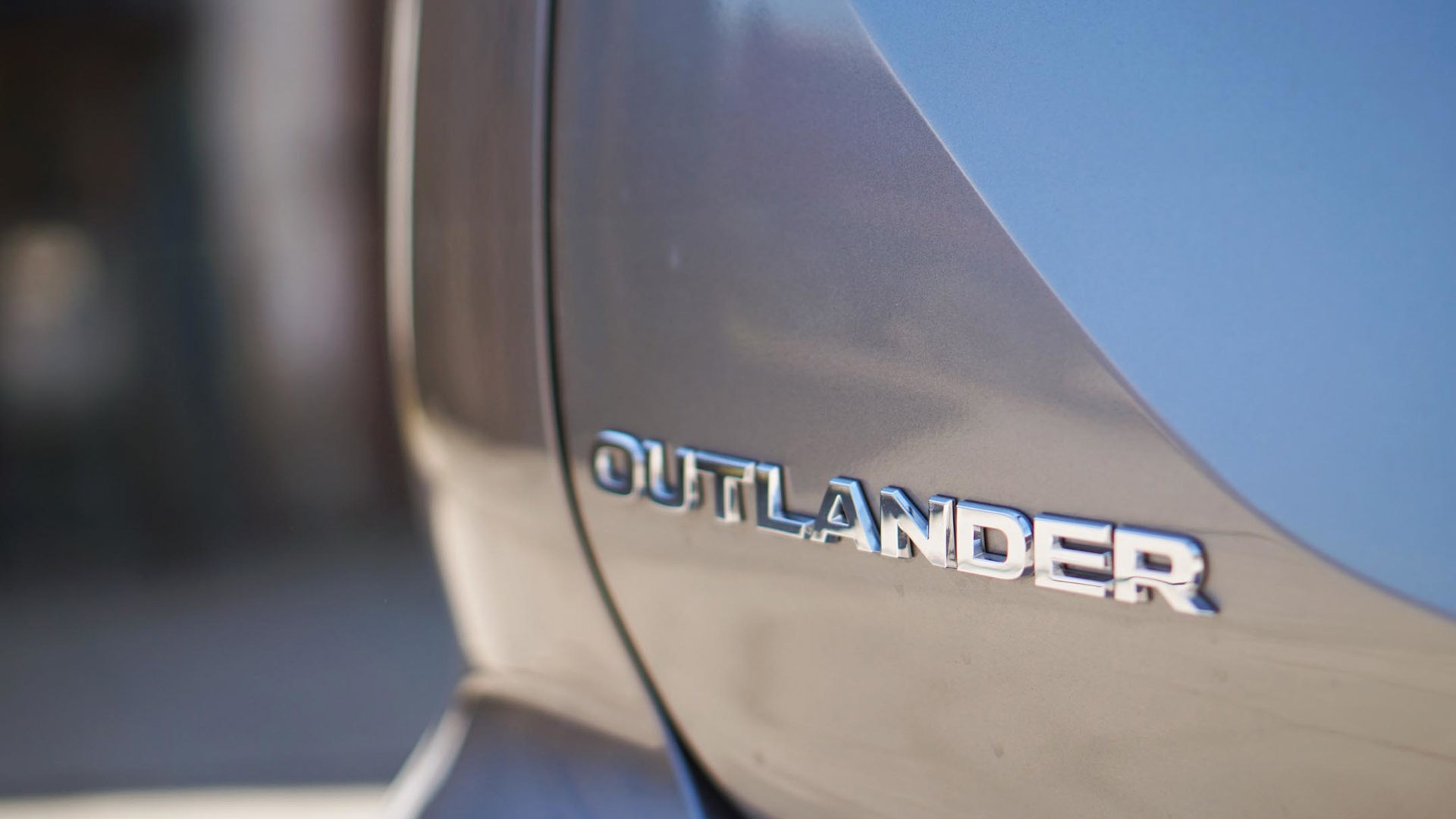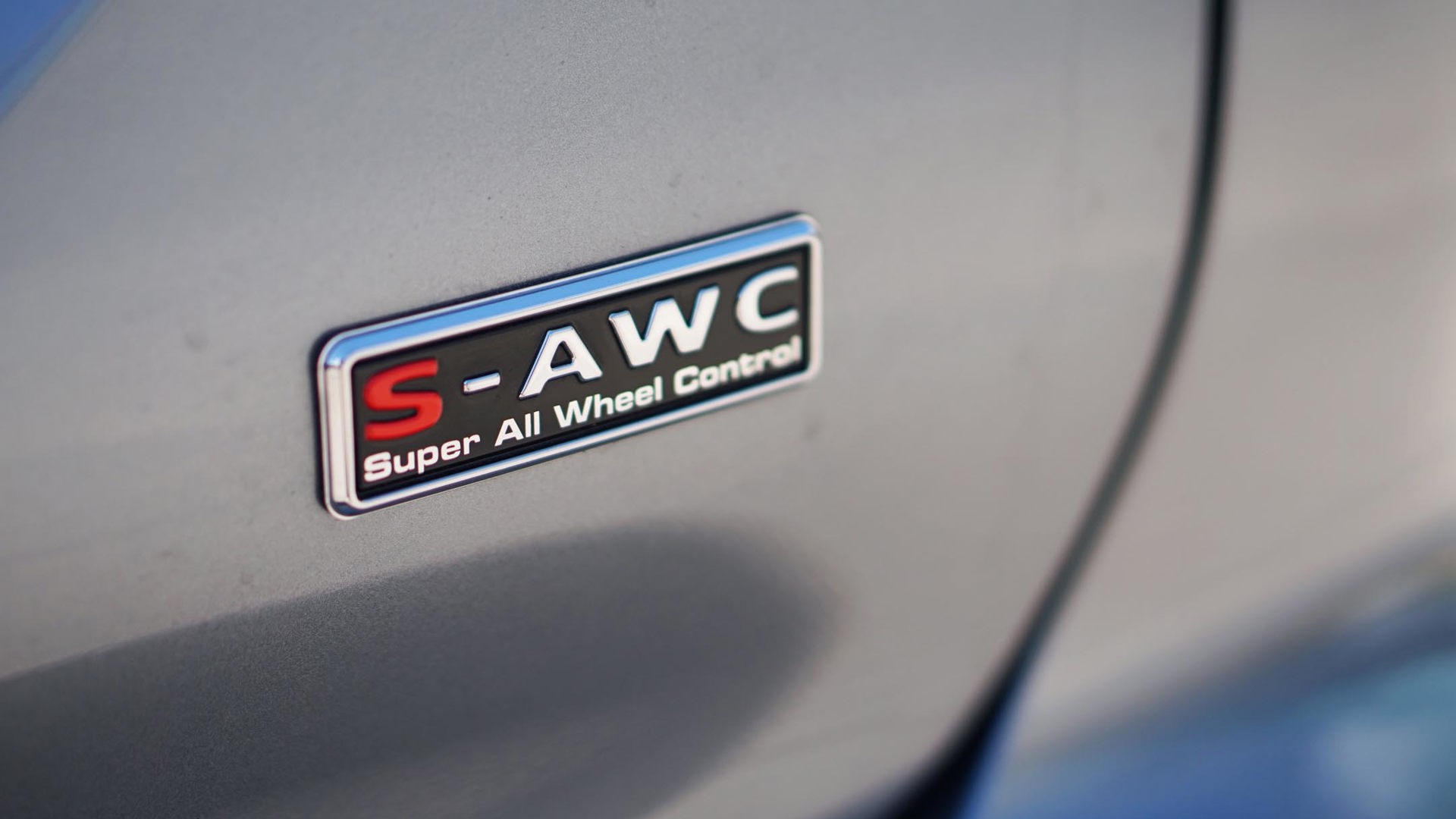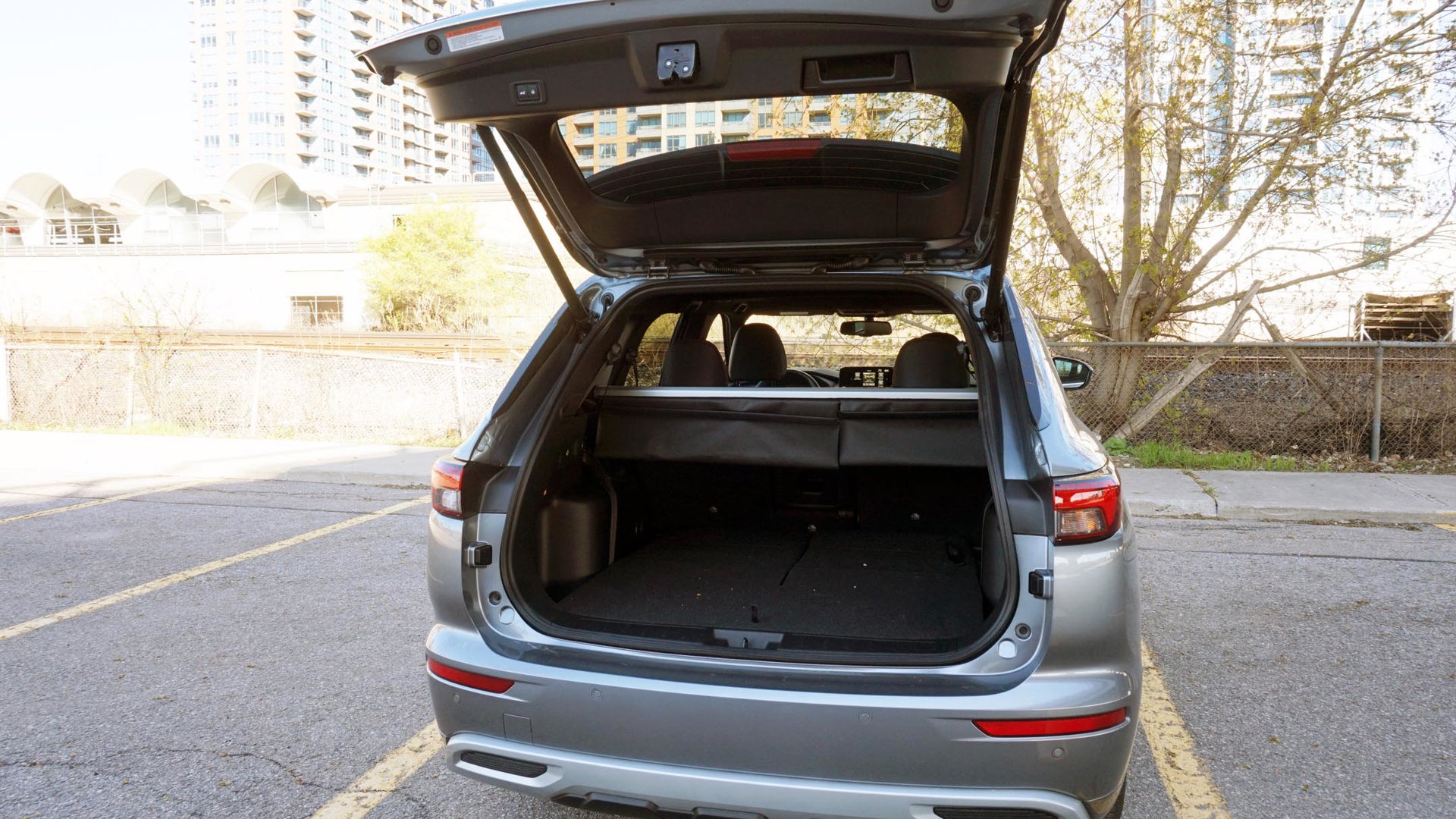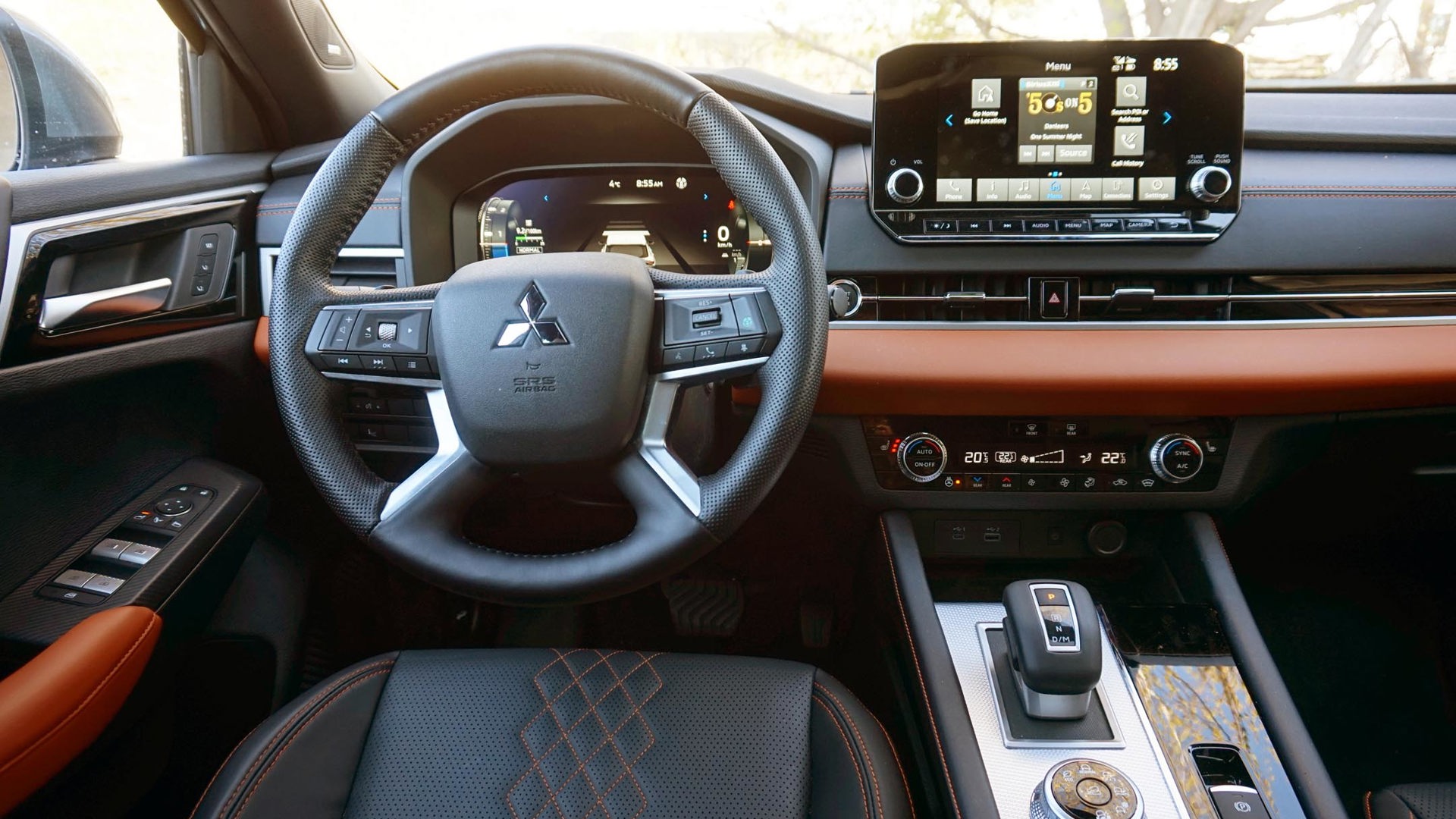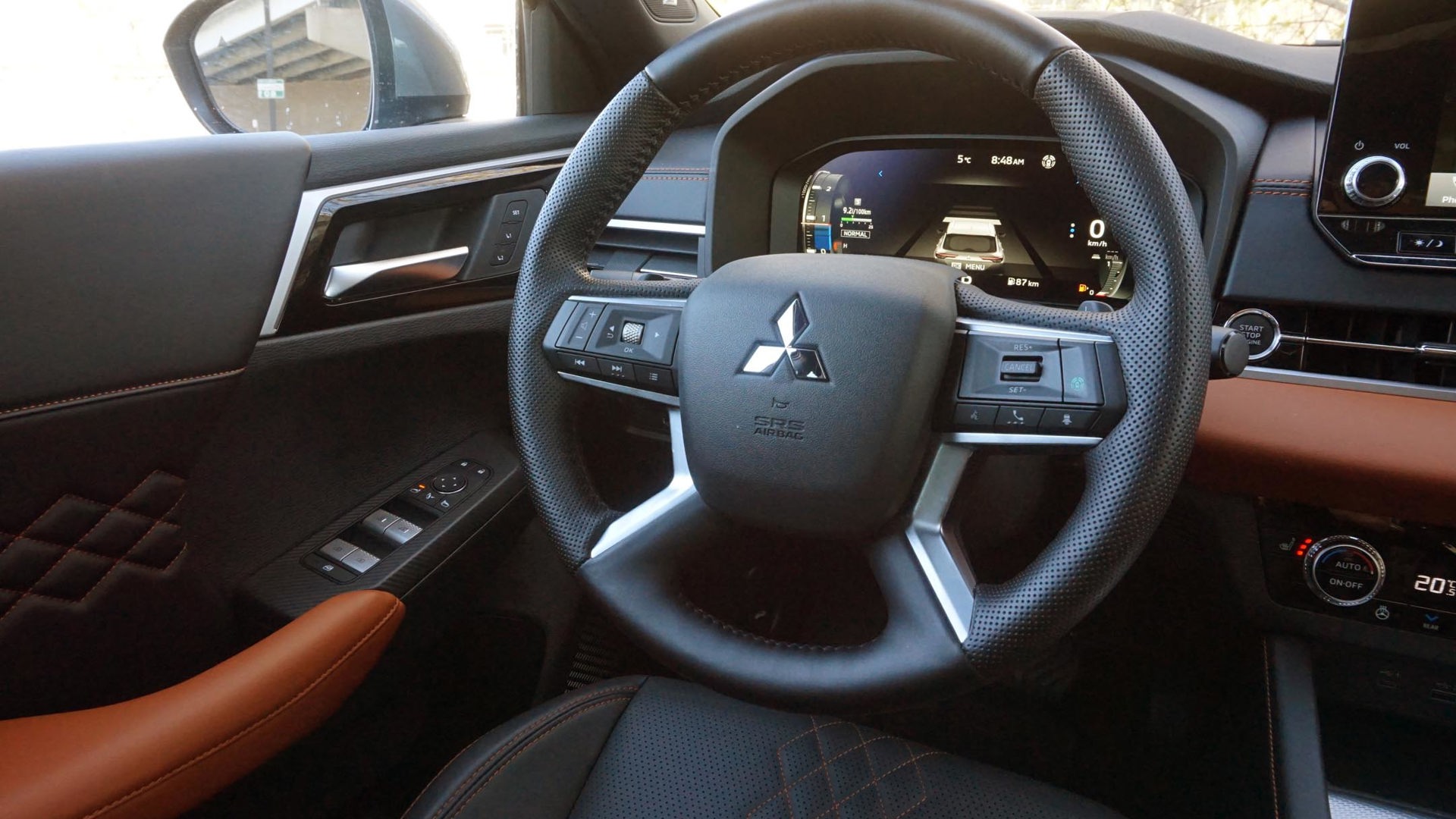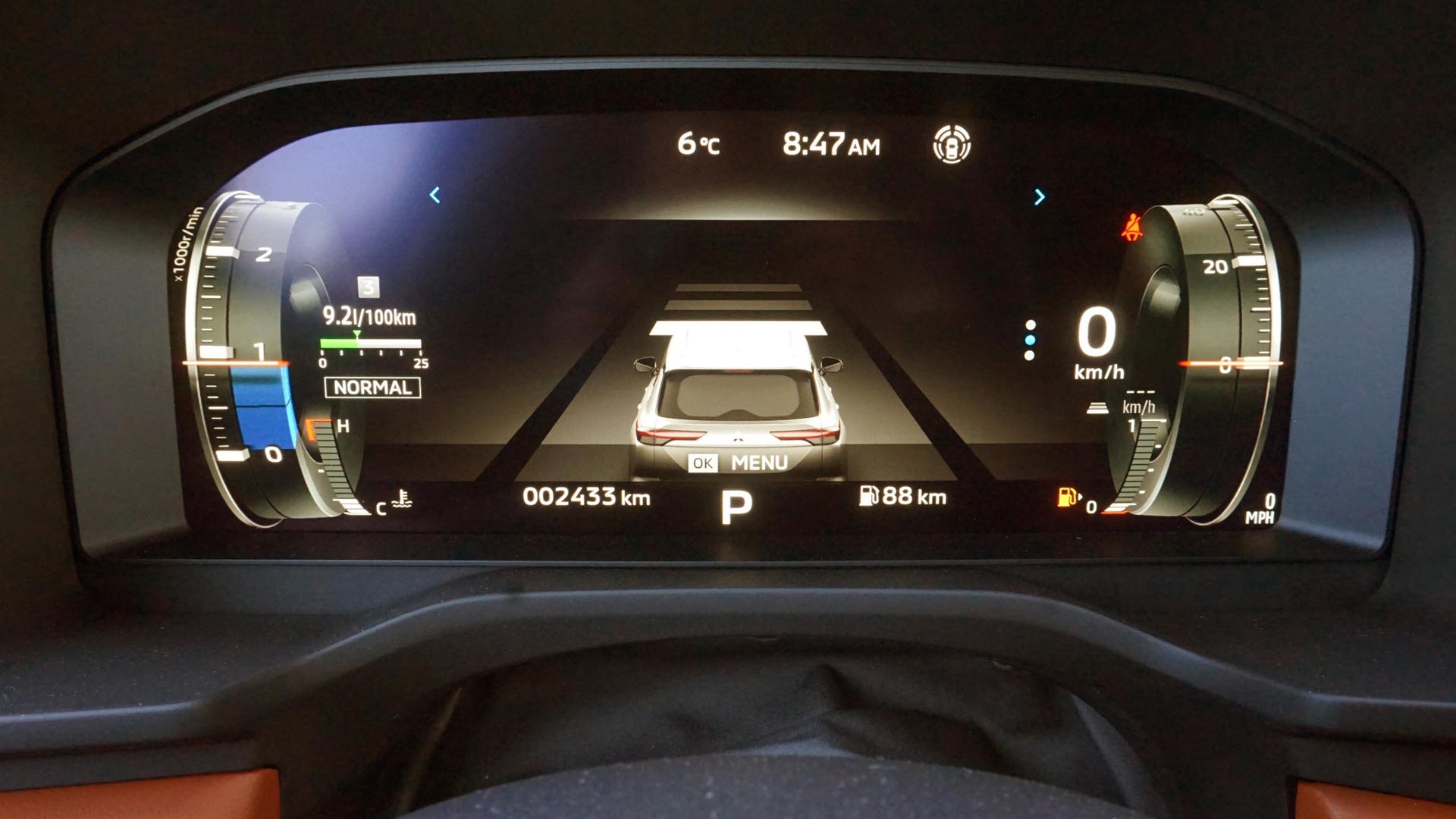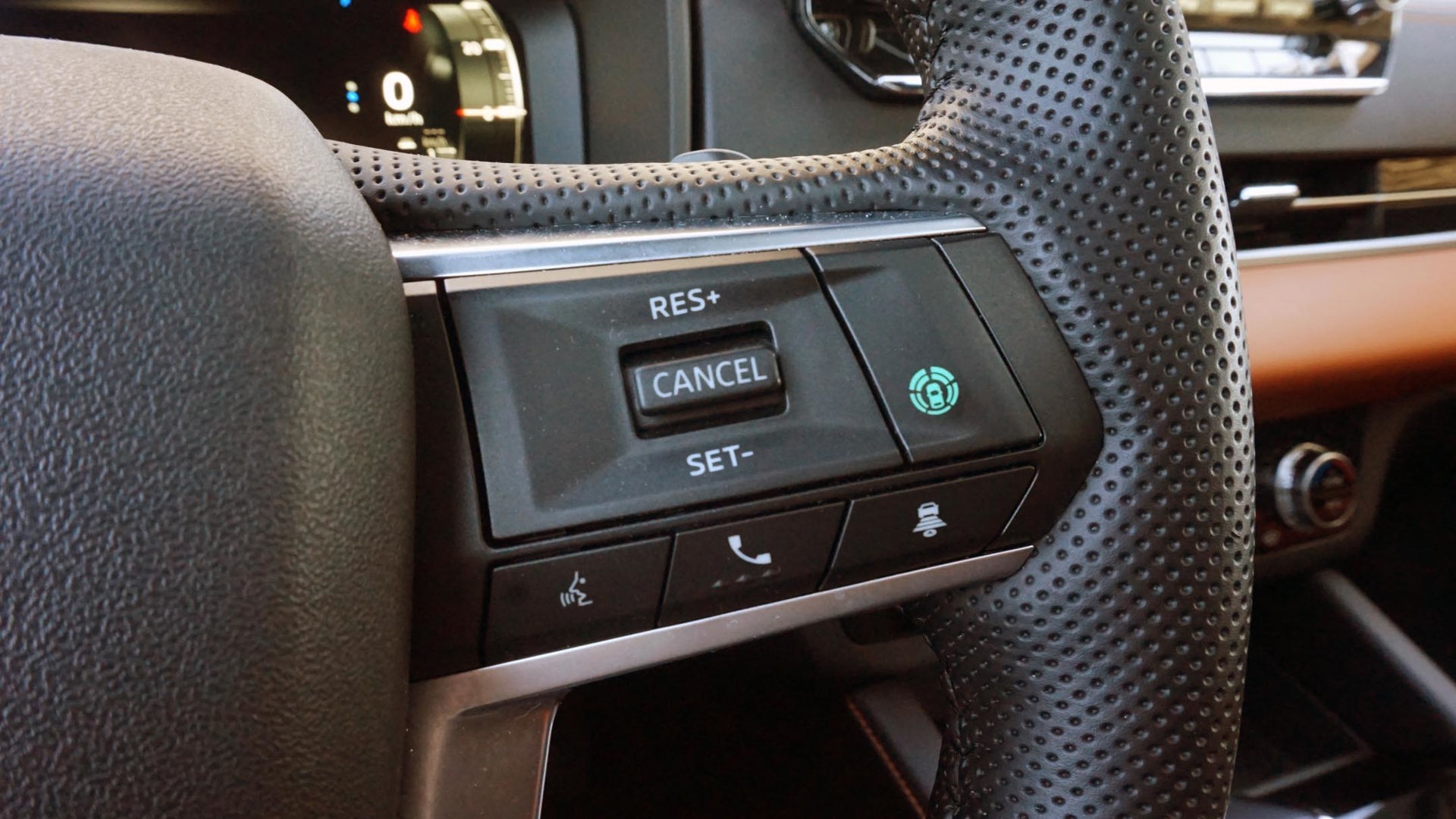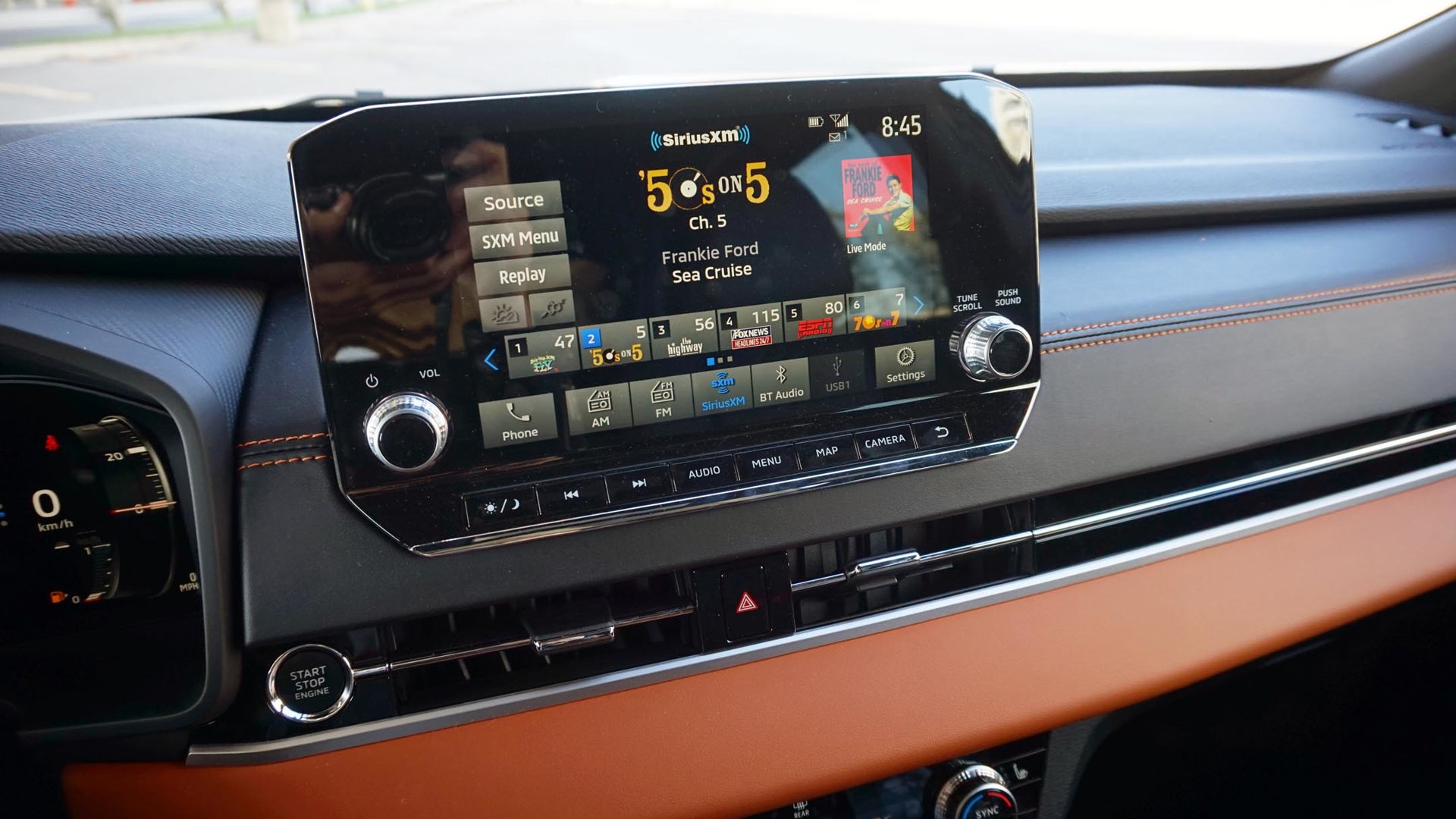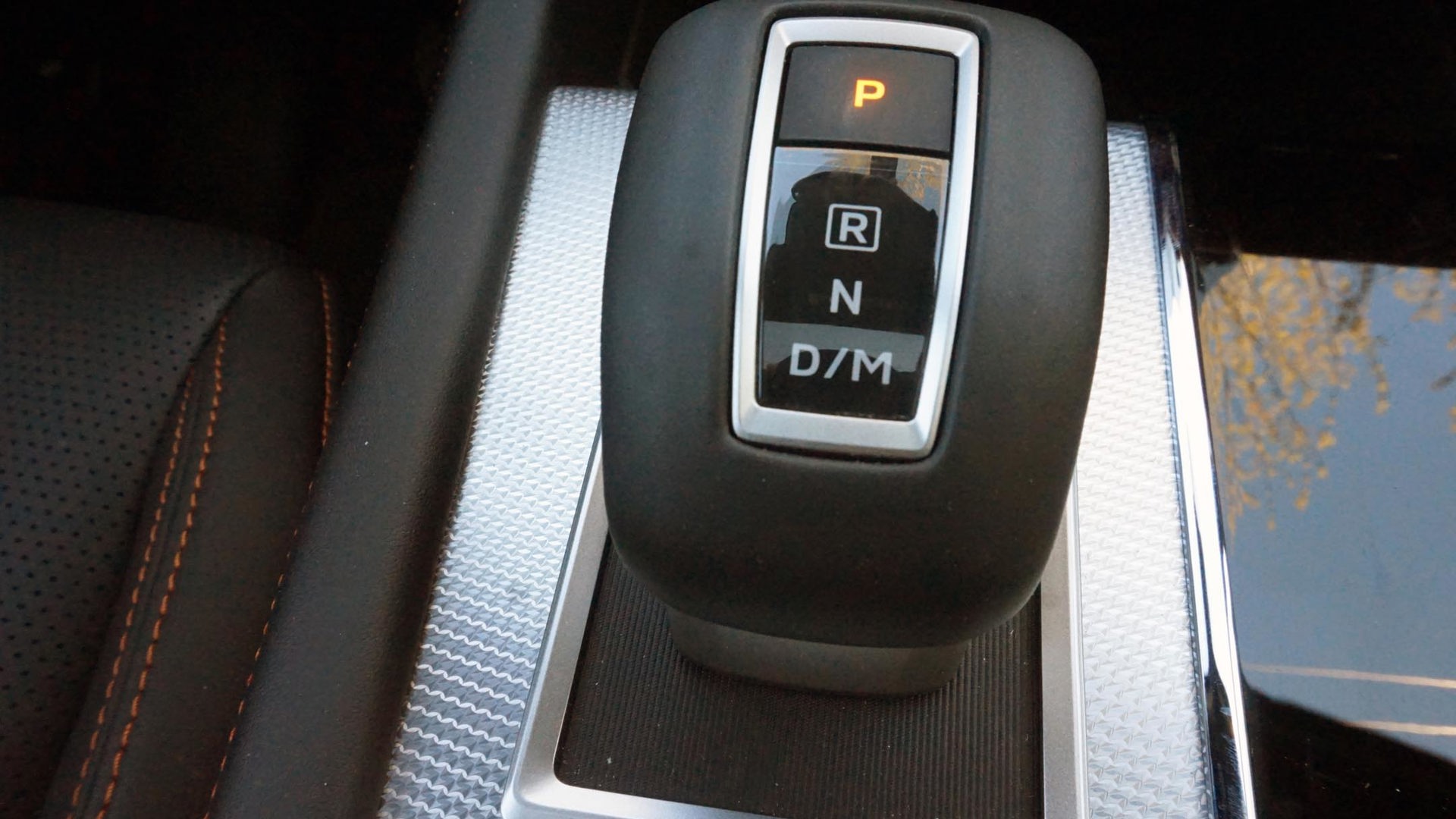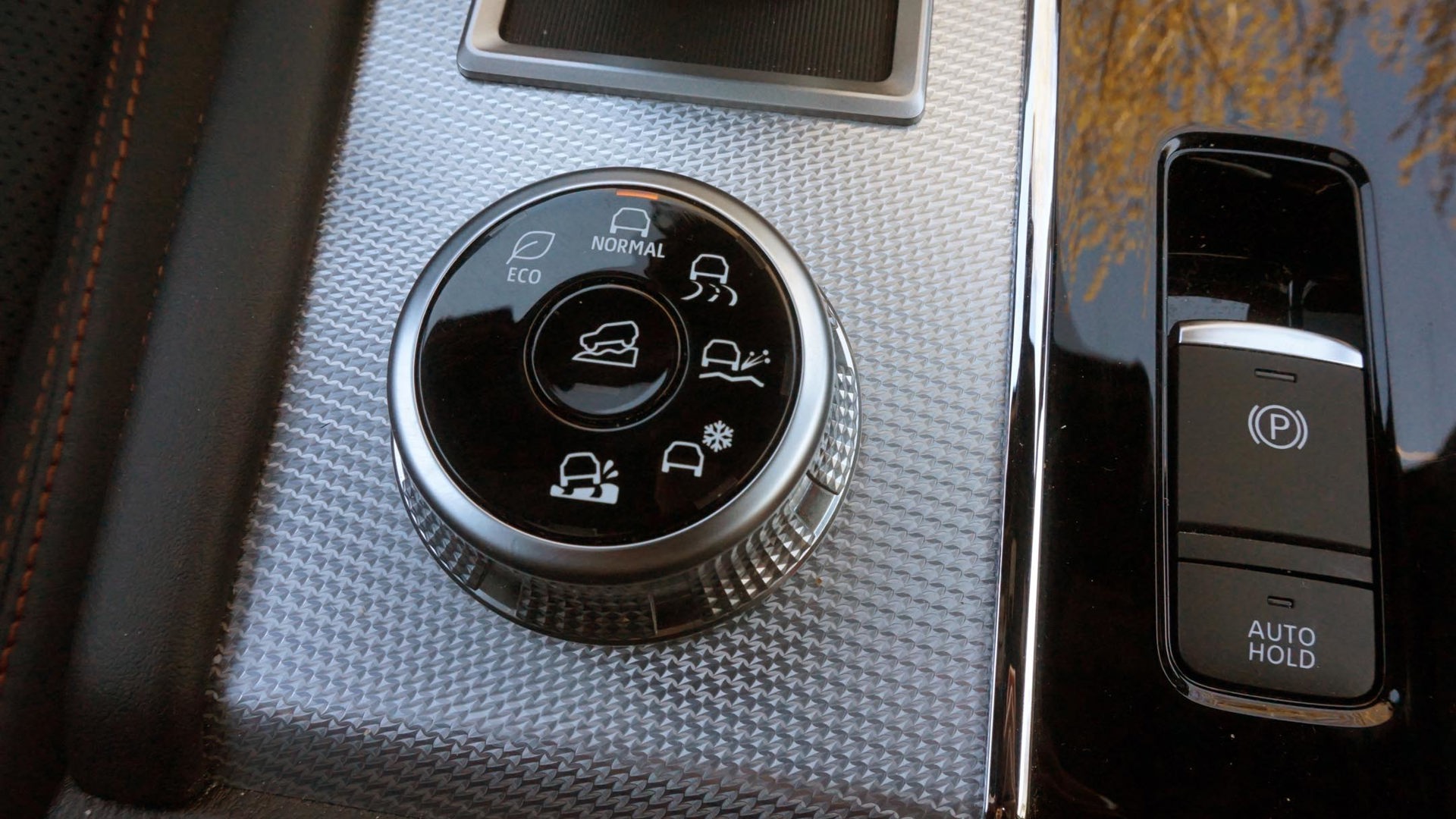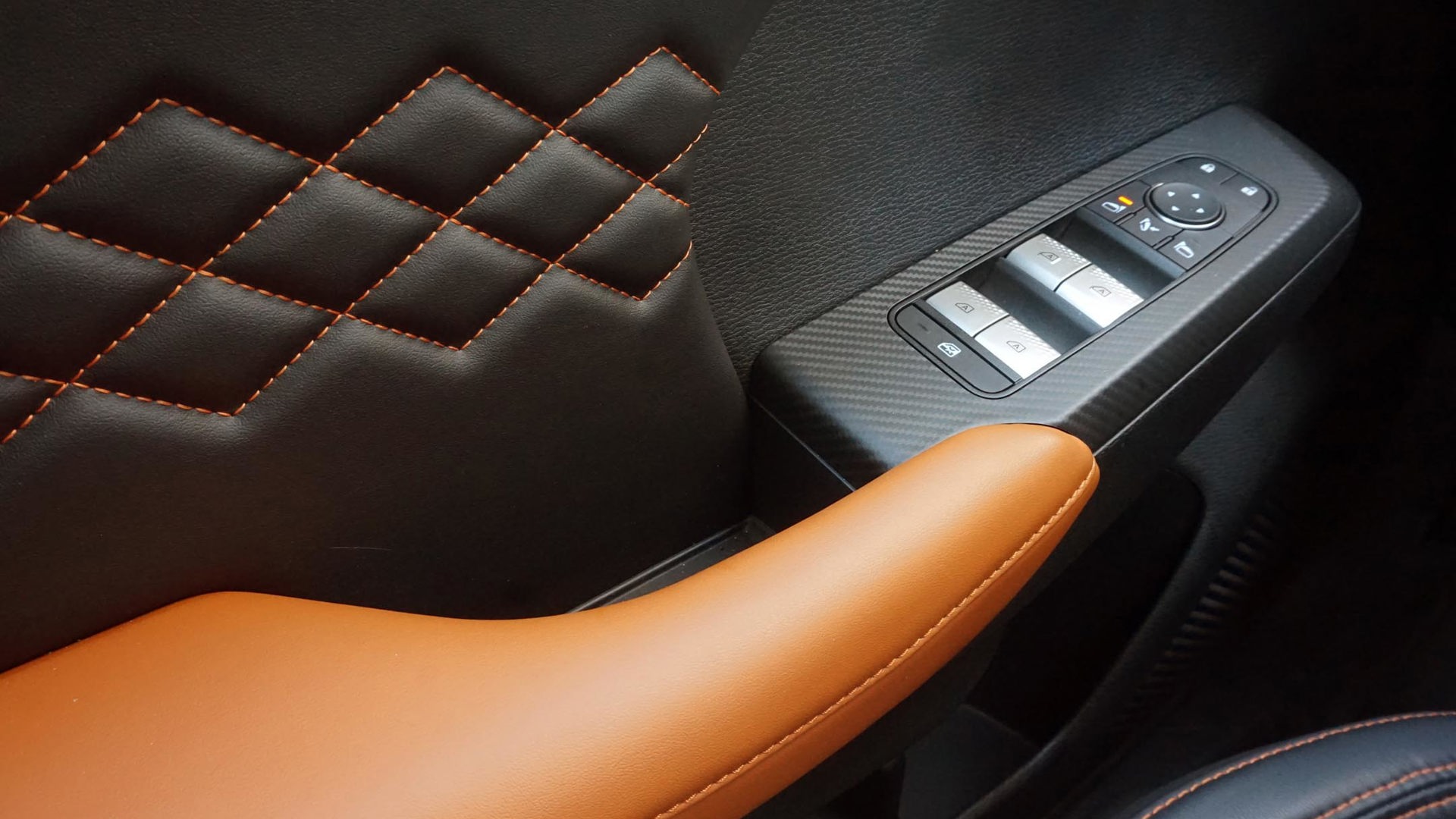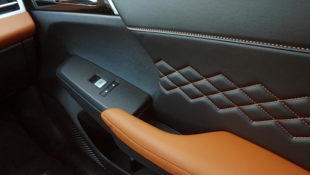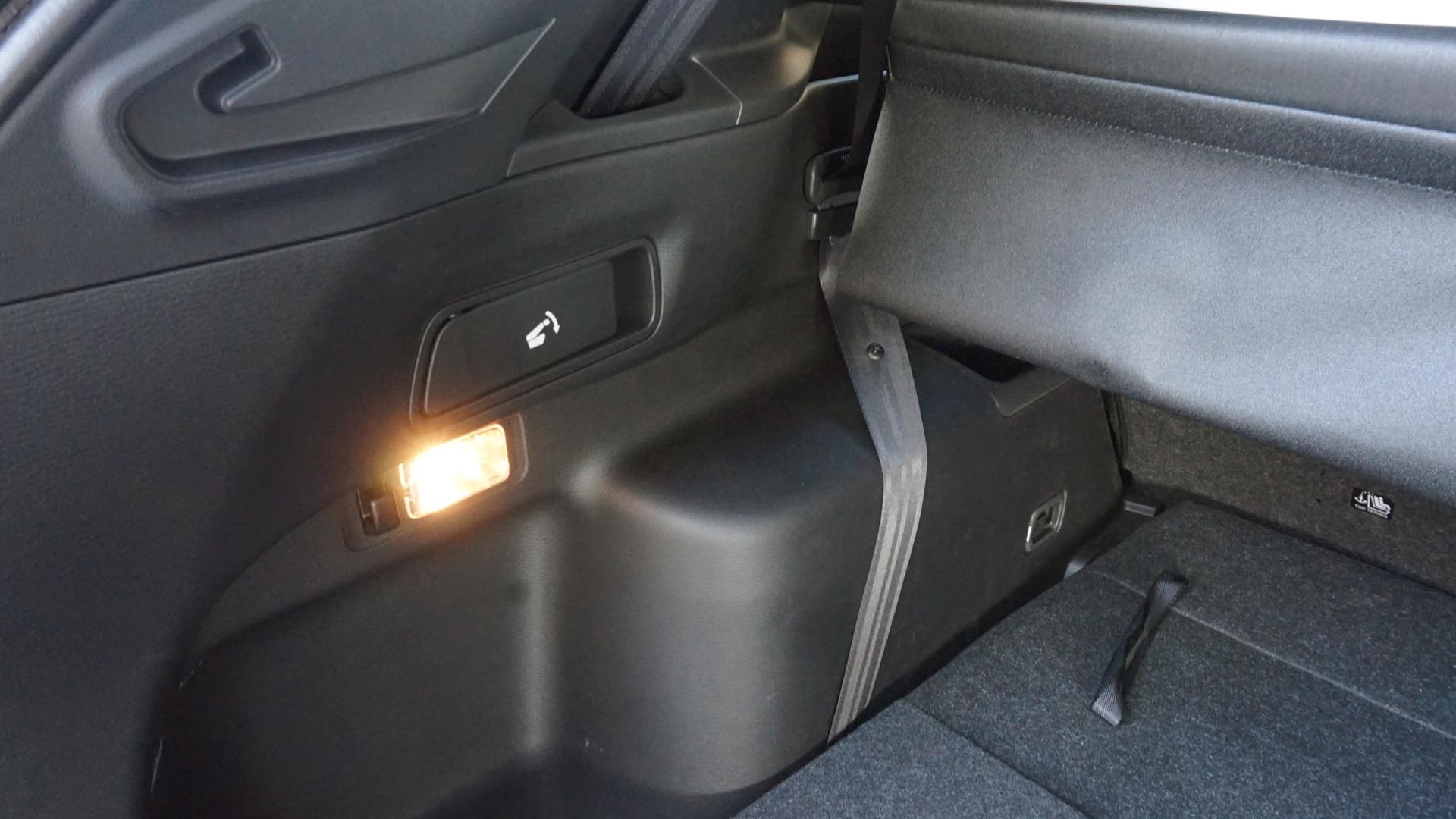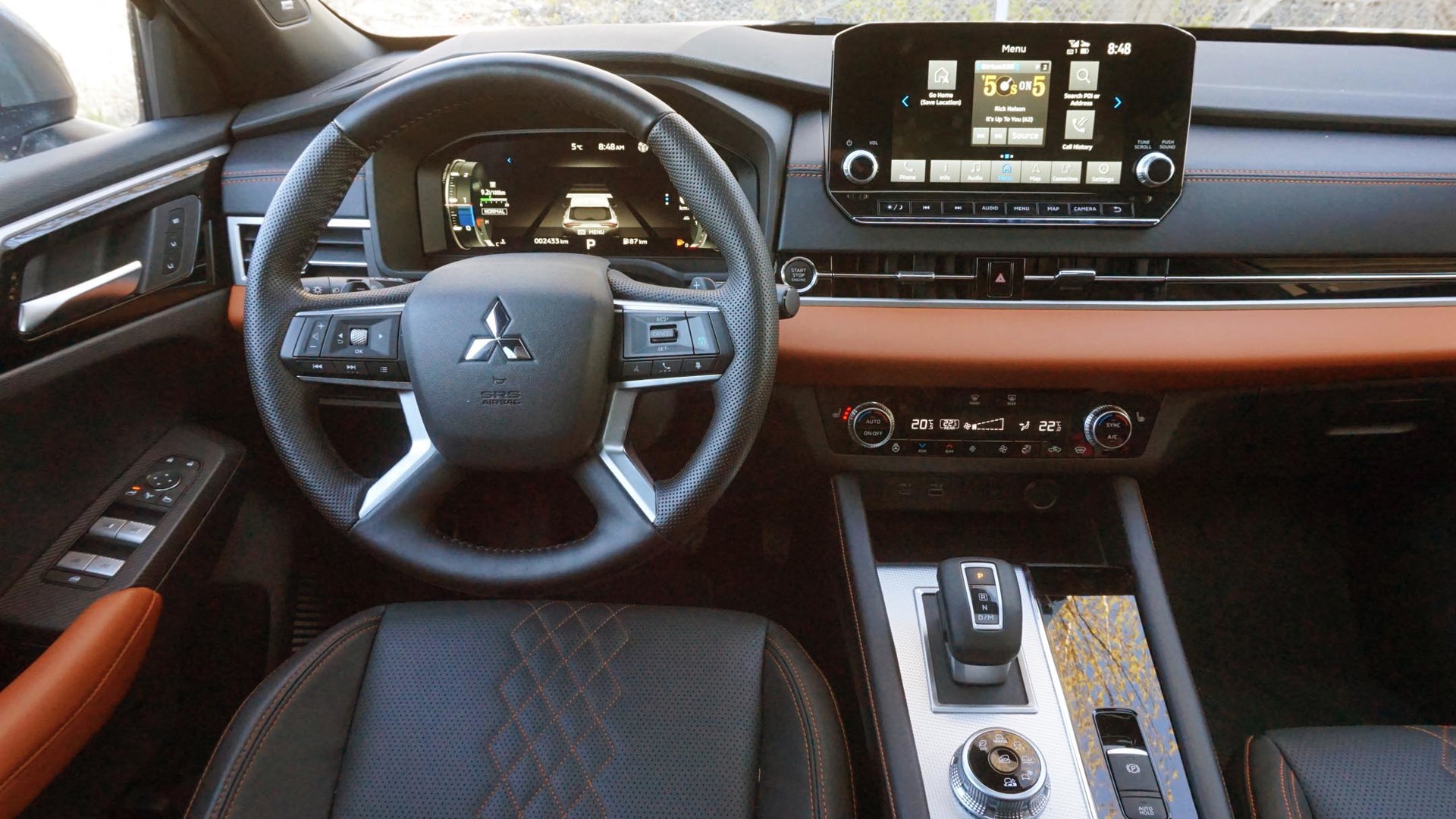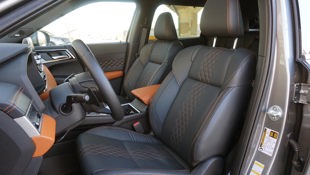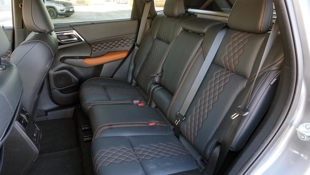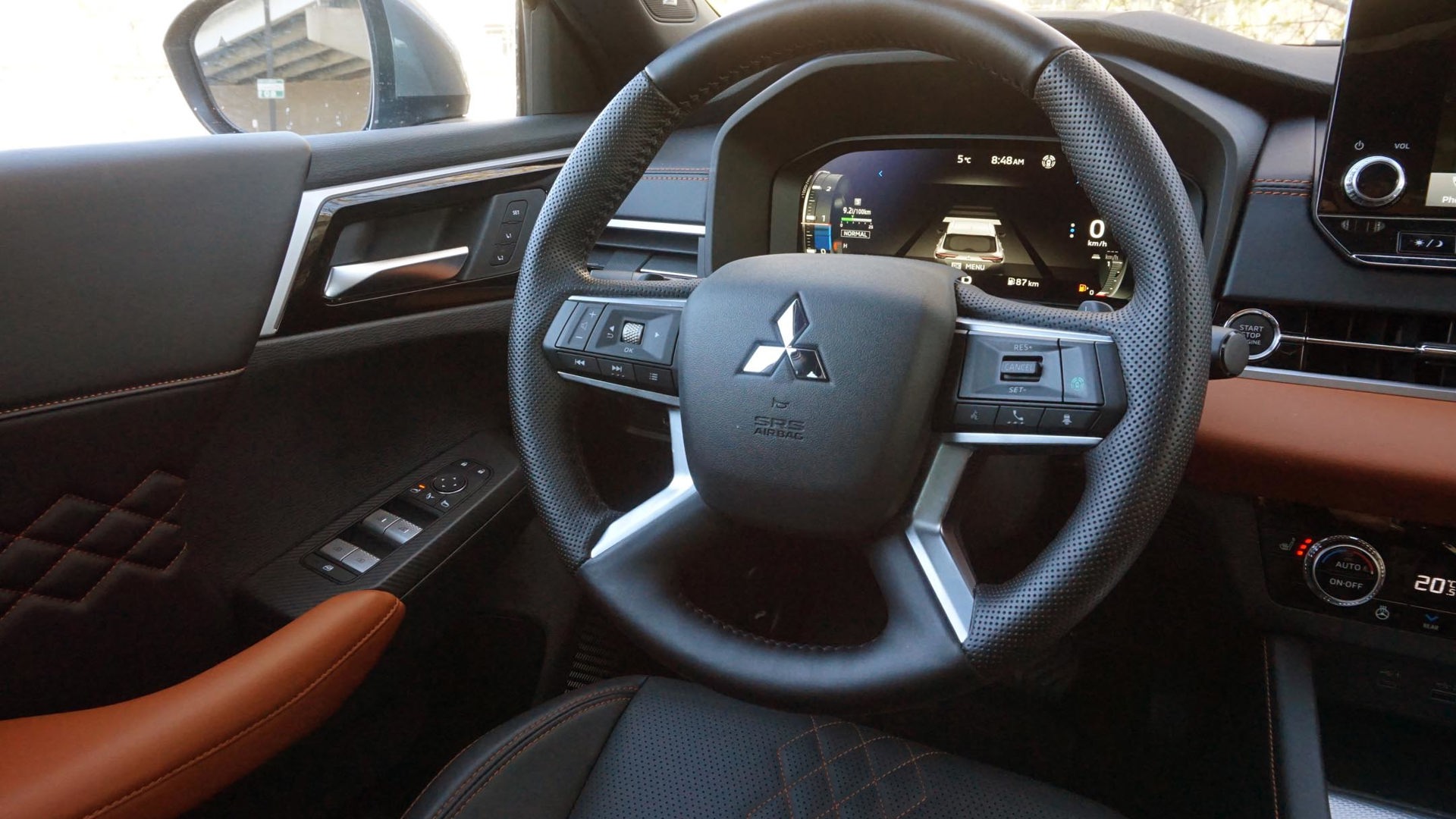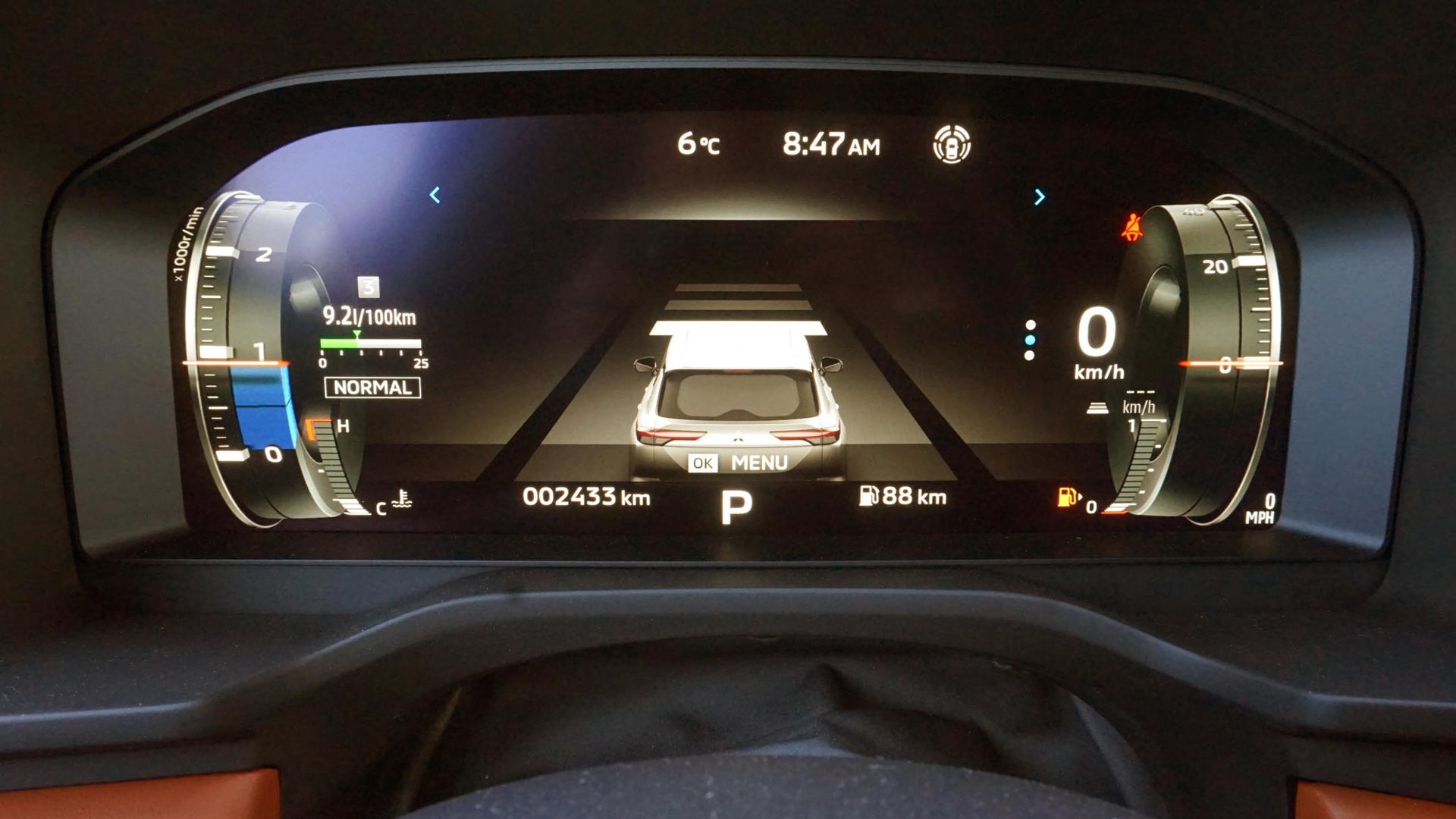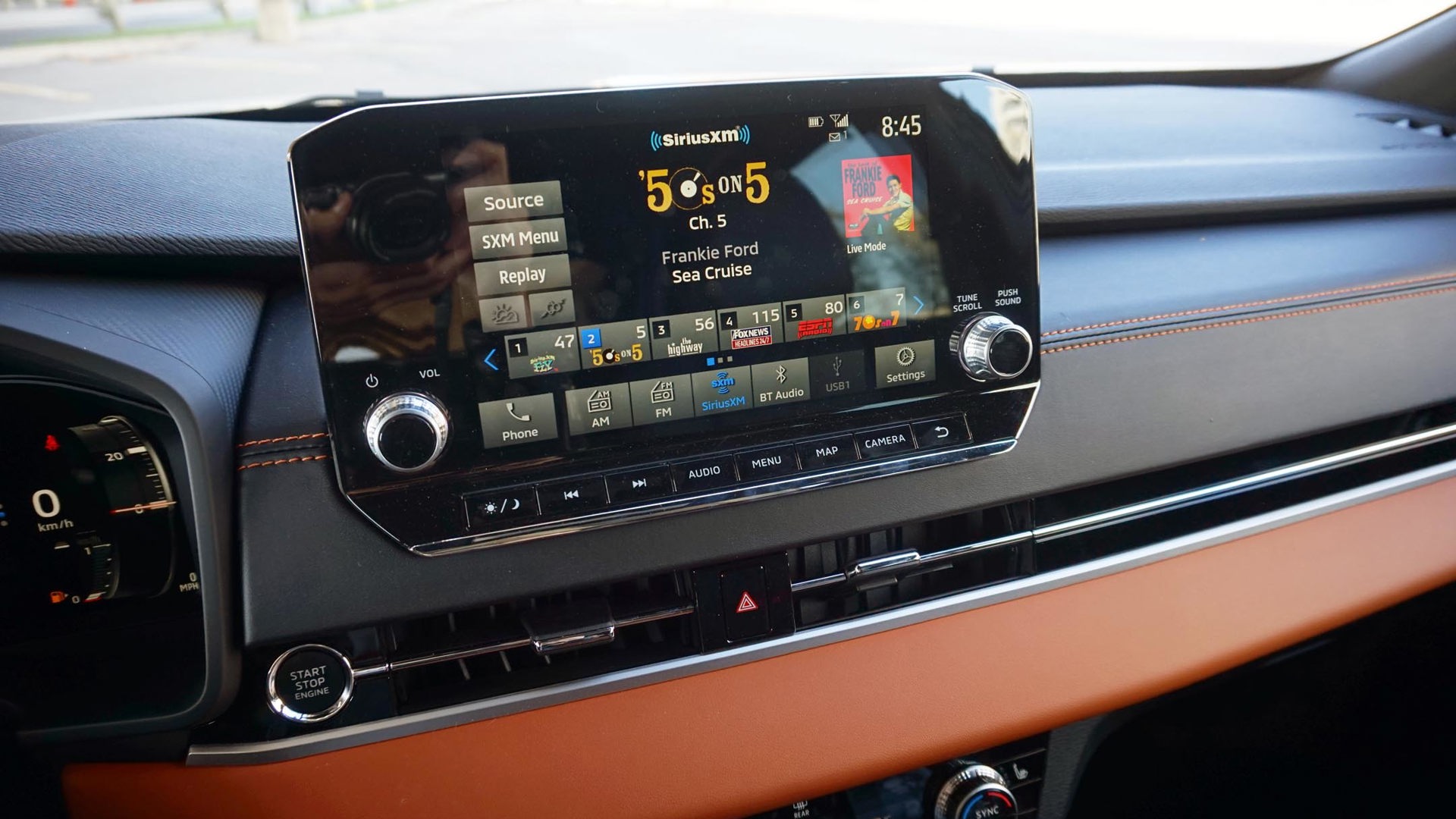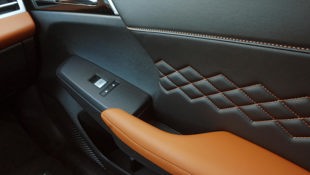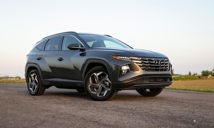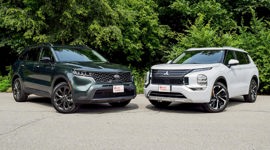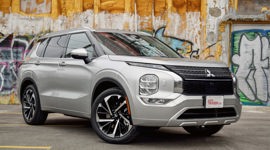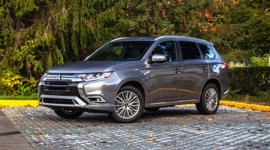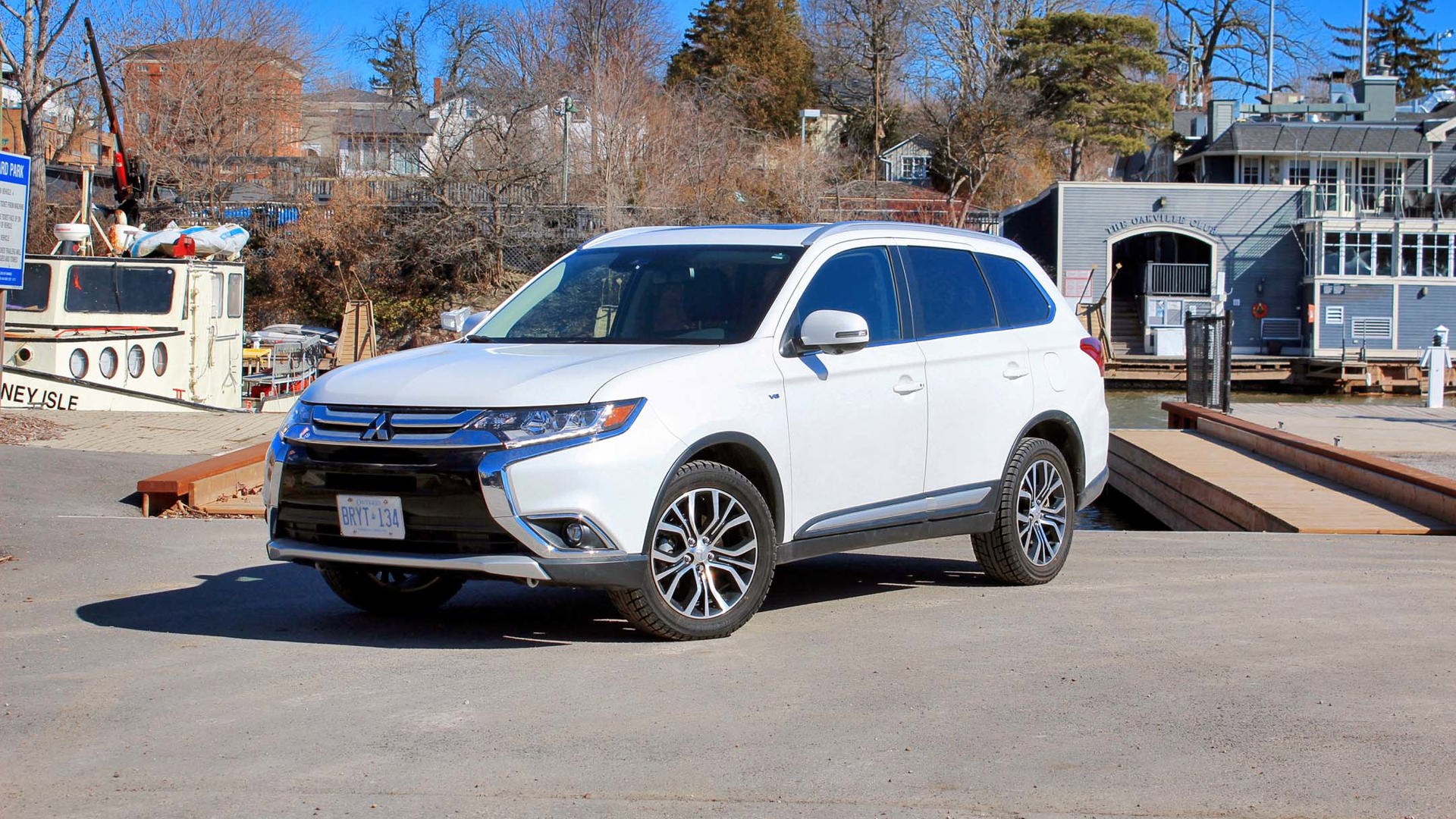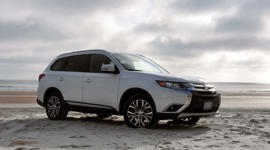 AutoTrader SCORE
AutoTrader SCORE
-
STYLING8/10
-
Safety9/10
-
PRACTICALITY8/10
-
USER-FRIENDLINESS9/10
-
FEATURES8/10
-
POWER8/10
-
COMFORT7/10
-
DRIVING FEEL9/10
-
FUEL ECONOMY8/10
-
VALUE9/10
I can’t resist a good glow up.
Whether it’s a simple makeup transformation or a deeper Queer Eye-style emotional journey to self-discovery and acceptance, they’re often as feel-good as they are inspirational.
The 2022 Mitsubishi Outlander has had one of the biggest automotive glow ups in recent memory, going from an SUV that was subpar and entirely forgettable to one that’s worthy of being considered among the segment’s best. With the brand’s alliance with Nissan finally coming to fruition in terms of product relevance, the overhauled Outlander seems poised to lift Mitsubishi out of a very real slump.
Styling: 8.5/10
The old Outlander’s grille had serious Star Wars stormtrooper vibes (not an insult), and the new face is much more Predator (also not a slight) – though not everyone will appreciate the sci-fi vibes. I like that Mitsubishi took a risk with the style and applaud the brand for coming up with a design that stands out in a crowded parking lot. With some people on our team at AutoTrader.ca calling it downright ugly [It was me. – Ed.], I personally like the Outlander’s redesign simply because it’s unique. Its upright stance makes it look rugged and aggressive, and while there are some details I question, the package as a whole looks great and dramatically cooler than the redesigned Nissan Rogue with which it shares a platform and mechanical parts.
The previous Outlander was downright depressing inside. The interior was bleak, with ugly plastics and cheap, creaking materials that made it feel like it was a decade past its prime. Now decked out in quilted leather seats, textured soft plastics, and various other upscale trims, it feels fresh, modern, and – dare I say – even upscale. My partner’s reaction when he first climbed in was, “This is fancy!” While there are perhaps too many different trims used (maybe the designers could have cut the fake carbon fibre and piano black), the cabin looks cohesive and the transformation is impressive.
Safety: 9/10
One of the benefits of a partnership with Nissan is access to its industry-leading driver assistance and safety features. The new Outlander has a robust system that comes standard with rear automatic emergency braking, rear cross-traffic alert, blind-spot monitoring, front automatic emergency braking, rear seat alert, and lane-departure warning. It’s impressive for these features to be included in base models. Higher trims also include automatic high-beams, lane-keep assist, driver attention alerts, lane-departure prevention, adaptive cruise control with stop-and-go capabilities, a top-down 360-degree parking camera, traffic sign recognition, and more.
The Outlander I drove had all the available safety features, and they all worked remarkably well during my time with it. The systems’ sensitivity is calibrated just right and even the way it alerts drivers of potential hazards is enough to prove useful but not so annoying that a driver would turn them all off, rendering them useless (like I have done in the past with some Honda and Toyota vehicles). The adaptive cruise control also operates smoothly and predictably, reacting to different situations naturally. I was impressed that when a car cut into my lane, the Outlander’s adaptive cruise control system applied the brakes progressively instead of panic braking like so many other systems do. The system can also adjust the cruise control’s speed based on what it reads on passing speed limit signs, though sometimes it sees a sign not intended for the lane you’re in like a speed suggestion for an off-ramp, for example. The error is easy enough to override.
The Insurance Institute for Highway Safety (IIHS) hasn’t crash tested the fourth-generation Outlander yet, but the previous model was a Top Safety Pick. With all these features and the bright upgraded LED headlights and automatic high-beams on the top-trim model, it seems poised to earn this designation again.
Features: 8/10
Besides its impressive safety and driver assistance tech, the 2022 Mitsubishi Outlander has two other standout features: a big and bright head-up display that shows a lot of relevant information (only available on the top trim), and a fully digital and customizable 12.3-inch gauge cluster (available on top two trims). Otherwise, notable features include standard heated front seats (heated rear seats are standard in the top two trims), standard Apple CarPlay and Android Auto (a wireless CarPlay connection is available with the larger nine-inch touchscreen but the wireless functionality is not compatible with Androids), heated steering wheel (standard except in the base trim), and 18-inch wheels (20s are standard on the top three trims). There’s one each of both USB-C and USB-A ports in the front and back, but it would have been nice if there was a three-prong household outlet somewhere, which is handy when camping.
User Friendliness: 9/10
Every button and function is exactly where you expect it to be, there are no mystery controls, and the layout makes sense, so there are no frustrations when trying to find what you need. The capless fuel filler is also a nice touch.
The infotainment system unfortunately looks dated, especially next to the excellent digital dashboard. While it’s responsive and easy enough to use, the menu structure could be streamlined and modernized to make navigating through it feel more like a smartphone.
Practicality: 8/10
The Outlander benefits from being one of the rare compact crossovers in its segment that offers a third row of seats. While the third-row seats are far from comfortable and are difficult to get in and out of, the added practicality of being able to use them sparingly gets it some bonus points. Moving the second row out of the way takes a lot of effort, but it shouldn’t be an issue if the third row isn’t often used anyway. The trunk has useful levers to fold the second row to make more room for cargo, but they have to be brought upright manually.
Up front, the Outlander lacks the generous storage cubbies some of its competitors have, and there isn’t a lot of space to stash items like keys and wallets – especially if the cupholders are in use and there’s a phone in the wireless charger. The centre console bin is quite small, but the door pockets are at least deep enough to fit a large water bottle. Other competitors (including the Rogue) have made more clever use of the space under the gear selector console by creating a pass-through, which is absent here.
Second-row passengers have two slots in the seatbacks ahead of them that are big enough to hold a phone and a tablet, providing a nice place to keep them secure but not out of sight when parked.
Behind the third row, there is 332 L of space, which expands to 950 L with the third row folded flat, and a large 2,218 L with the second row folded. The second row also folds 40/20/40 so you can use the middle seat as a pass-through for longer items. In comparison, the Honda CR-V, which always gets praised for how roomy it is, offers 1,110 L of space behind the second row and 2,146 L with the second row folded flat, 72 L less than the Mitsubishi. The new Outlander’s trunk opening is also wider than the previous model, which helps when loading large items.
I love that the doors extend to cover the rocker panels so you don’t hit your shins on them or get your pants dirty in the winter. The doors also open quite wide, making it easier for kids to get in and out, or for parents to install child seats.
Comfort: 7/10
I found it difficult to dial in a comfortable seating position, and the driver seat cushion was nearly too long for my thighs. This won’t be a problem for leggier drivers, but I’m 5-foot-7 and the seat was pushing on the back of my knees, so even short drives became uncomfortable. I also found the cushions themselves too hard and the passenger seat isn’t height adjustable, which doesn’t help matters.
Three-zone climate control is standard in all but the base trim, and sunshades for the second-row passengers are standard in the top trim. The second row is roomy and the seats can slide forwards and backwards, but again, the third row is cramped and best used for emergencies only.
Power: 8/10
The overhauled Outlander is powered by a non-turbo 2.5L four-cylinder engine that gets 181 hp and 181 lb-ft of torque to all four wheels via an automatic continuously variable transmission (CVT). On paper, those output figures don’t look too promising, but that’s about what’s expected in this segment.
All models come standard with all-wheel drive, making it a bit of a rarity in the segment, as most other competitors have front-wheel-drive base models to keep their advertised starting prices low. Each model also comes with a drive mode selector with six different driving modes to help with different conditions: eco, normal, snow, gravel, tarmac (acts like a sport mode), and mud. This fourth-generation Outlander is not available yet as a plug-in hybrid (PHEV), but that is a model I’m very excited about.
Driving Feel: 9/10
In practice, the Outlander’s powertrain is perfectly adequate and even makes the SUV feel quick off the line. While the CVT is not one of the best examples around – it’s noisy and it can feel rather unresponsive and lethargic when trying to make a pass on the highway – it does the job right in most other situations, mostly working unobtrusively in the background. The complaint about highway performance is quite typical for SUVs in this segment with a four-cylinder/CVT combination and it isn’t bad enough to be a dealbreaker. Quite a lot of wind noise can also be heard on the highway and the SUV gets pushed around quite a lot on a blustery day.
What matters to me more is how easy to manoeuvre the Outlander is. Its turning circle feels tight, which makes it comfortable to navigate through parking garages and tighter city locales. Parking the SUV perfectly in one shot is remarkably easy thanks to its manoeuvrability, large windows, and the excellent top-down 360-degree parking camera. The steering is light at parking lot speeds and heavier when it needs to be out on the highway, making it easier to keep centred. The SUV feels balanced and confident.
Fuel Economy: 8/10
The 2022 Mitsubishi Outlander is officially rated to get 9.7 L/100 km in the city, 7.9 on the highway, and 8.9 combined. My week with it returned an average of 9.1 L/100 km after 500 km of mixed city and highway driving, which isn’t too off from the official combined rating. It also runs on regular-grade fuel. The Rogue is rated to be slightly more efficient, but it’s also slightly smaller, while the Honda CR-V’s 8.7/7.4/8.1 L/100 km ratings are even more impressive.
Value: 9/10
The 2022 Outlander is available in seven trims, starting at $33,989 (including freight and PDI) and topping out at a very reasonable $44,078. The level of safety equipment included in base models is impressive, and even in the top trim, the Outlander feels like it’s worth the money.
The Verdict
The 2022 Mitsubishi Outlander’s transformation is good enough to get an enthusiastic “YASSS QWEEN” from Queer Eye’s Jonathan Van Ness. Post-transformation, the SUV can strut proudly with its head held high into a segment crowded with some confident and established competitors. As if the Fab Five themselves did an episode at Mitsubishi HQ, the new Outlander got more than just a makeover – it signals a philosophical change for the Japanese brand that should elevate it towards earning a spot on your shopping list.
| Engine Displacement | 2.5L |
|---|---|
| Engine Cylinders | I4 |
| Peak Horsepower | 181 hp |
| Peak Torque | 181 lb-ft |
| Fuel Economy | 9.7 / 7.9 / 8.9 L/100 km cty/hwy/cmb |
| Cargo Space | 332 / 950 / 2,218 L behind 3rd/2nd/1st row |
| Model Tested | 2022 Mitsubishi Outlander GT S-AWC |
| Base Price | $41,678 |
| A/C Tax | $100 |
| Destination Fee | $1,650 |
| Price as Tested | $44,078 |
|
Optional Equipment
$650 – Metallic paint, $150; GT Premium semi-aniline leather appointed seats, $500
|
|
